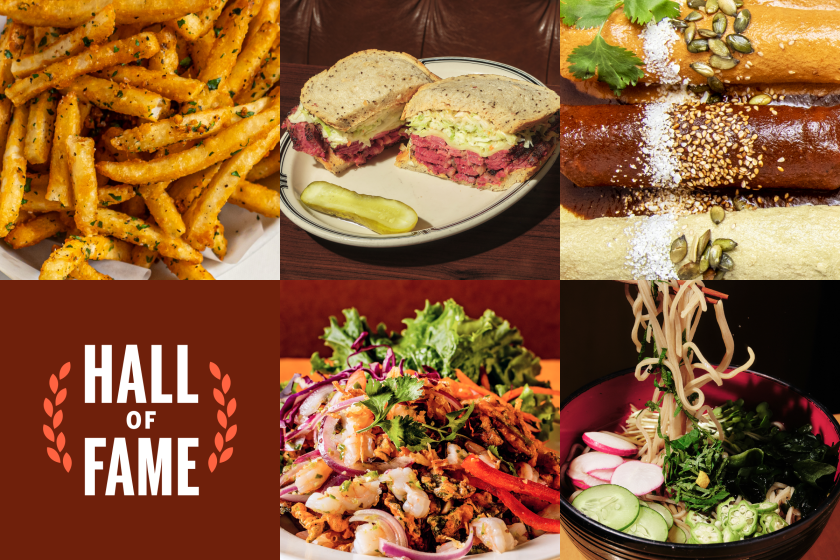These are the 101 best restaurants in Los Angeles
Los Angeles is a miraculous place to eat.
For the tacos and sushi and pasta alone, we’re a wildly fortunate lot. Our size — our critical mass — brings the advantage of specificity. A taquero can differentiate himself by re-creating the smoky carne asada recipe passed down in his Sinaloan family. One chef finds fulfillment perfecting the Edomae-style nigiri she studied in Tokyo; another thrives on Californian liberties, dolloping caviar over tuna and slipping in a course of summer vegetables cherrypicked from the nearest farmers market. An obsessionist can revive a variation of ravioli that bleeds crimson from beets, attracting an audience of similar fanatics to feed.
The same promise holds for Korean barbecue, Lebanese flatbreads, dan dan noodles, stewed oxtails, crab curry … on and on. The possibilities lie just down the block, at the other end of the L.A. basin, in swank dining rooms, at roving trucks or weekly events or unpredictable pop-ups. Imagination and storytelling are the twin engines by which our most famous industry runs, and the same rings true for our peerless food culture.
Every year for a decade now, The Times has published its annual guide to 101 exceptional restaurants. It’s a map, and a panoramic snapshot capturing an already-blurring moment. First-timers comprise a quarter of the 2023 list. Among them are an Inglewood bistro that homes in on West African flavors, a Filipino rotisserie that doubles as a natural wine bar and a standout among our sudden surplus of shawarma options. Does a wholly unrecognizable reincarnation of last decade’s most daring Korean restaurant count as new? Check it out to decide.
Our Hall of Fame list, now numbering 33, includes 10 inductees so essential to our communities that they exist in a category that lives forever, free from a critic’s whims or rankings. I’ve also named a dozen all-time favorites for drinking wine, sake, small-batch mezcal, local craft beers and next-level tea and coffee.
These restaurants are so defining of what it means to eat and live in Southern California — that they’ve earned a place of honor for all time.
It’s worth acknowledging that this has been a difficult year. Hollywood’s dual strikes halted work for thousands of Angelenos for months, a reality that affected restaurant occupancies as well, and our country is involved in a second, particularly polarizing war. Falling back on tropes about how food brings people together feels empty. But these places, nearly all of them small businesses, do nourish us in literal and larger senses. We celebrate in them, escape to them, learn more about ourselves and others in them. We break away from the algorithms, even for a few minutes, to juggle tacos and feel the sun on our faces, as only we can in Los Angeles.
Sip on sake, craft beer, natural wines or agave spirits or try a soothing tea or uplifting coffee drink at one of our critic’s favorite places to drink in Los Angeles.

Kato
Those of us who have followed Yao’s career tend to refer to the airy, wood-and-concrete-lined space in Row DTLA as Kato 2.0, since the restaurant began as a bootstrap operation in a West L.A. strip mall in 2016. It’s been nearly two years since the move, an upgrade of outsize proportions, and every ambition that first landed Kato at the top of the 101 Best Restaurants list in 2019 has been more fully realized in spades. Yao’s longtime business partner, Nikki Reginaldo, leads a staff of servers with serious demeanors; she brings levity with wit and boss R&B playlists. Ryan Bailey came aboard in the new location as the third leader and the beverage guy. Between his 70-something-page wine list, including the city’s most trailblazing nonalcoholic drink program, and bar director Austin Hennelly’s alchemical, easy-sipping cocktails, I sometimes wish I could come solely to imbibe. But the food thrills. Look for the most unassuming presence by the stoves, and there’s Yao. His quietness hides his relentless creativity. He’s swapping out luxe Hokkaido scallops in plum reduction one week for lobster over buttery shrimp toast the next, using Sichuan pepper as brain teasers, making the rightful case for pig’s ears as delicacies, and offering a savory-sweet bao filled with salted egg yolk custard as a climax.
Dinner in the main dining room is $275 per person, with a slightly abridged $170 tasting menu of Kato classics at the bar that’s ideal for solo diners and usually includes a dish involving caviar, mussel liquor, smoked onion cream and a filling side of milk bread. It’s wonderful, but the main experience feels more refined, more driven, each time I visit. So much of our fine dining winks with signifiers of our culture — a sashimi plate here, a Mexican ingredient there — but Yao’s cuisine originates from an interior place. This is me, it says. And when we taste it, we understand: This is Los Angeles.
Read the full review of Kato 2.0.

Anajak Thai
Beneath the barrage of acclaim, this is a beautifully human endeavor. When you finally score a maddeningly difficult reservation you walk into Anajak to find … a small, sweet-looking neighborhood restaurant, with wine bottles lining every inch of shelf space between tables covered in white cloth. Wine director Ian Krupp will swing by to help untangle the amazing, admittedly overwhelming list. Haw mok, a steamed fish-curry custard, wobbles like a souffle as you carve out the first spoonful. Galangal, cumin and coriander grip gai yang-style grilled wings in their fragrance. The star of the Justin-era menu is fried chicken sheathed in rice-flour batter and scattered with fried shallots. The bird is prepared in the style of Nakhon Si Thammarat, a city in southern Thailand where Rattikorn Pichetrungsi, Justin’s mother, has family. Rattikorn remains very much involved with the business: In peak season her mango sticky rice rates as one of the city’s most soothing desserts.
Read more about Anajak Thai.
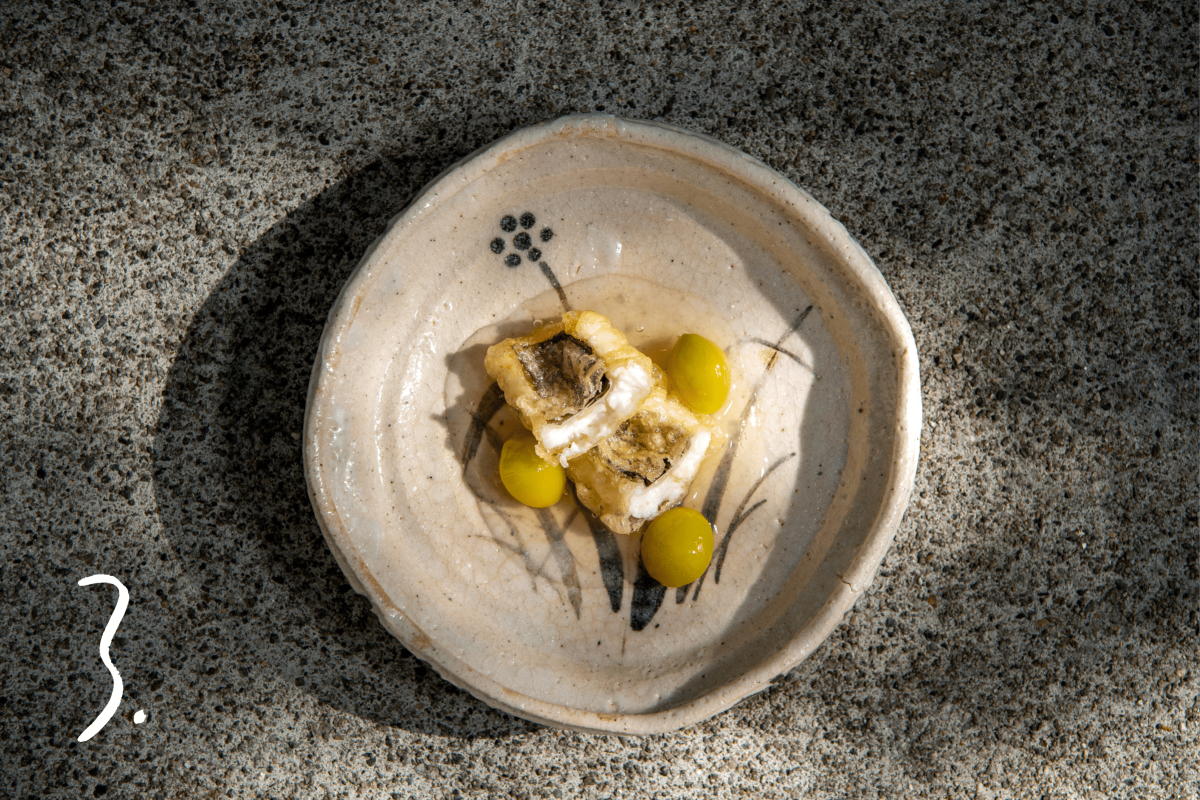
Hayato
It also takes tenacity to chase a reservation for a place that enjoys a cult-level following, costs $350 per person and serves 35 diners a week. Hayato ranked first in last year’s guide, and while I swear by its merits, I concede that scoring a seat can be a frustrating, months-long endeavor. Still. For the fruits of Go’s perfectionism — the man makes two batches of cloudless dashi per service so he can choose the better one, and always manages to find perfect strawberries or peaches or muskmelon for a rightly simple dessert — I say, even as a once-in-a-lifetime indulgence, persevere.
Read the full review of Hayato.

République
That’s truer than ever. Walter’s gifts are as evident in an autumn farmers market salad of endive, apples, dates and goat cheese as a now-signature roasted duck nestled with peaches in the summer and persimmons in the fall. Margarita finally won the James Beard Award for outstanding pastry chef this year, after eight nominations. I send locals and visitors alike for her exemplary pastries, and for breakfasts of kimchi fried rice or a potato pancake/soft-poached eggs/smoked salmon trio, two favorites among many options. The last decade clinched République as a cornerstone of Los Angeles dining, a bridge between casual meetups and formal occasions, an icon in its own right.
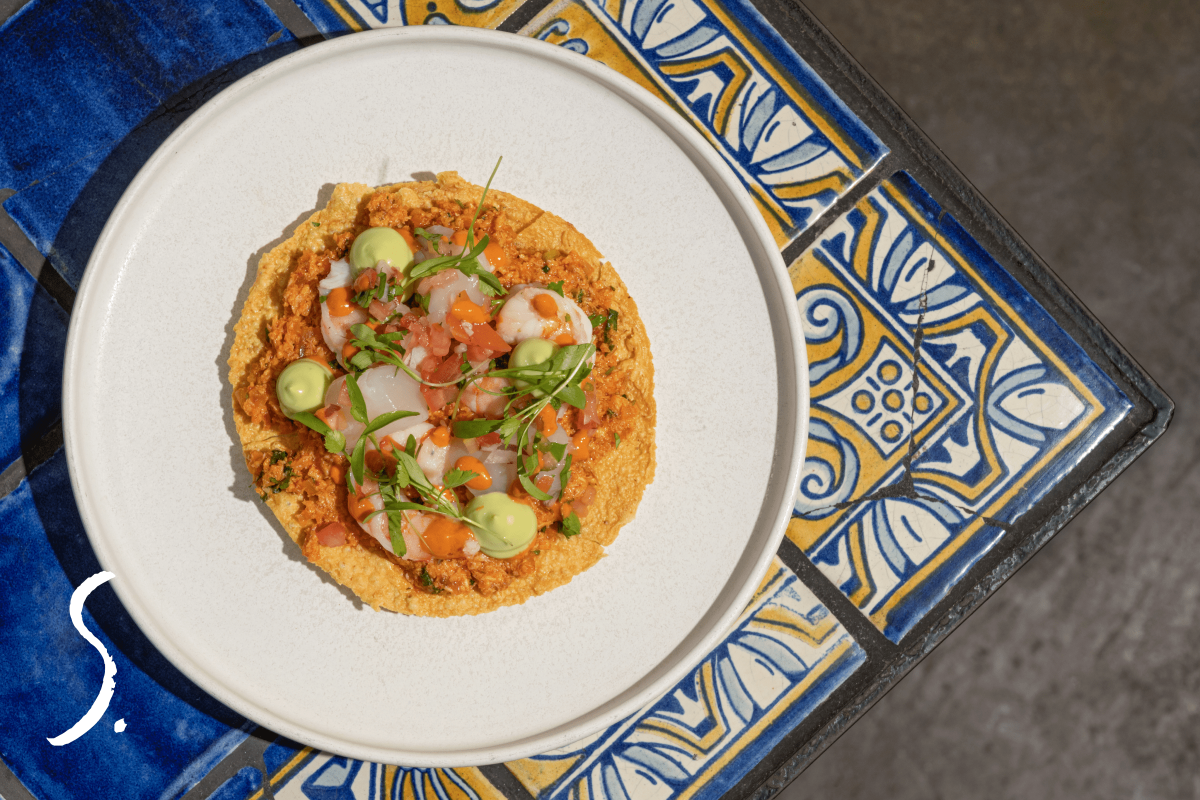
Holbox
He quickly began dreaming bigger, though, wishing to articulate a sum expression of the coastal flavors he loved across Mexico — and his own imaginings. Some of his menu’s early scene-stealers grew out of relationships he developed with top-tier seafood suppliers. They include limey kanpachi ceviche, garnished with avocado puree and tongues of Santa Barbara sea urchin, and the pata de mula (Baja blood clams) with more citrus and a sauce of morita chiles blended with balsamic vinegar that reaches a thrilling intersection of smoke, brine and acidity. Then there’s the smoked kanpachi taco buzzing with peanut salsa macha and a stretchy knot of queso Oaxaca, the fried octopus taco anchored by mulchy sofrito stained black from squid ink, and the bisque-like stew showcasing delicate seafood sausage.
Even though he can’t serve alcohol at the Mercado and considered relocating, Cetina decided to stay put and invested in a recent renovation. He gained four counter seats, but critically he expanded the kitchen, allowing him to hire additional staff. Doing so has created more room for community and creativity, and for possibility. Holbox is The Times’ 2023 Restaurant of the Year.

n/naka
Dinner will roll on gracefully from there, in forest scenes and seascapes of vegetables, noodles, locally caught fish and exactingly calibrated broths ... with probably a taste of top grade Wagyu along the way. If life lessons can be gleaned from fine dining, I always leave n/naka thinking about how the married chefs tinker with the strictures of kaiseki, which traditionally can be rigid, to suit their individualism. It’s one thing to commit to structures in work and life, their cooking seems to say; it’s another to achieve creative liberation through a chosen form. In all regards, the experience feels worth the investment to obtain a booking (reservations go live on Sunday mornings at 10 a.m.) and the cost, which is $310 per person.

Morihiro
He helped codify an L.A. style of omakase in which small dishes — some of which reflect technique-focused kaiseki traditions (a zensai plate of tiny, seasonal bites) and some of which spring from his imagination (big-eye tuna tartare heaped with caviar) — precede the parade of sushi. A table is a fine option, but if you can, splurge on a seat at the sushi bar in front of the master himself. The nigiri is spectacular: Onodera gives equal attention to superior seafood and the Japanese rice milled daily in the restaurant for his meticulously seasoned shari. Handsome ceramics, most made by the chef, bring another level of beauty. Staffers pour the most compelling pairings of any sushi bar in L.A. Rather than the muted stillness of most top-tier sushi bars, Morihiro brims with boisterous warmth. After several hours you will stand up from an omakase very full and very cheered.
Read the full review of Morihiro.

Providence
Cimarusti and his longtime chef de cuisine, Tristan Aitchison, make constant, restrained changes to their tasting menu. No one meal looks the same from night to night, but expect fish and crustaceans (caught mostly from American waters, though occasionally from Japan and elsewhere) served in vivid oils or buttery sauces with sculpted vegetables, all set down in lovely symmetries. It’s the extra touches that linger in the memory: the incredible sourdough boule using wheat from Tehachapi Grain Project; the pile-it-on luxe options of the restaurant’s famous uni egg as well as cocktails prepared tableside; and the city’s hands-down finest service team, led by Cimarusti’s co-owner, Donato Poto, who grasp the importance of human connection in such a rarefied setting. My sole wish here is for the return of Providence’s Friday lunch, a power scene that was like no other in L.A.

Moo’s Craft Barbecue
An important factor: The line to order can move along glacially, and another 20 to 30 minutes often elapses before your food is ready. Plan accordingly — sipping one of the more than two dozen beers on draft can nicely fill the time — or consider ordering takeout online for pick-up.

Bavel
At the table, it means the weightless hummus swirled into a moat filled with duck ’nduja is as wonderful as ever, as are the hulking lamb neck shawarma over laffa and Gergis’ leaf-shaped strawberry pastry balanced with tart sumac and sweet cheese. Anchoring ingredients — market vegetables, grilled prawns, lamb chops both charred and blushing — are canvases for chile pastes, tufts of herbs and deliciously soured dairy in many forms. Some counsel: The dining room, always full, rattles from the extreme decibels. Ask in advance for a patio table for a quieter experience. If you’re into wine, sommeliers can pull you down a rabbit hole of Grecian obscurities and older vintages of all sorts they might have stashed in the back.
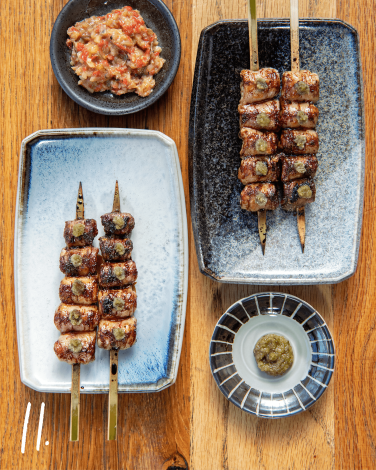
Tsubaki
Between Tsubaki and the couple’s next-door bar, Ototo, Kaplan maintains the most enlightening and thrilling selection of sake on the West Coast. It too changes with the seasons, as brewers release effervescent nama sakes in the spring and fuller-bodied counterparts in the fall. On the plate and in the cup, the duo’s combined sense of experimentation makes the place (and those eating there) feel alive with possibility. Ever wondered where a food critic chooses to celebrate his own birthday? Here’s the answer.
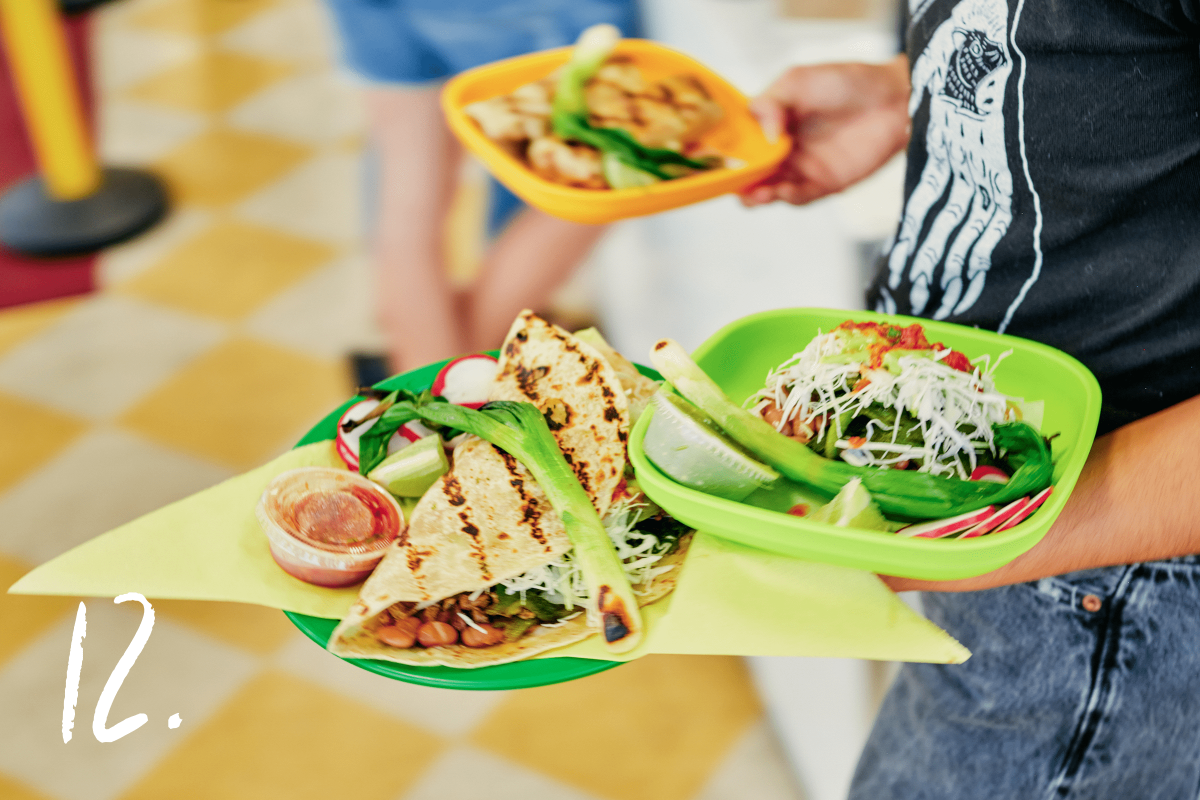
Sonoratown

Quarter Sheets Pizza
That’s one more thing to anticipate at Quarter Sheets: constant change. To that end, the greatness Ziskin achieves with her layered, ever-varied creations is uncanny, almost spooky. It’s just cake! But it’s also more: It’s the sum of her imagination and years of experience, funneled into America’s edible synonym for celebration. Princess cake takes its cues from the traditional domed Swedish torte, including extra-bright raspberry preserves, billows of cream and a pale green marzipan shell. Then there’s the slab cake, which rotates weekly with the California seasons and the whims of a homegrown Los Angeles chef. It consistently delights, but its acidic-creamy-savory extremes might challenge too. Is her polenta chiffon with layers of sweet corn custard, peppery preserved blueberries and blackberries, and salted honey Chantilly the flat-out best cake I’ve consumed? Let’s just say I had thought of myself, dessert-wise, as a pie person. Now I think of myself as a pie and Hannah-Ziskin-cake person.

Antico Nuovo
Opened in 2019, Antico Nuovo has steadily found its footing and its audience among the crush of fine-dining Italian restaurants in Los Angeles. It might just be the best of them now. Bold or tenuous, each of the pastas stands out with such distinct personalities; they are the meal’s holy center. Begin by swiping crisp, lofty hunks of focaccia through roughly pureed green chickpeas rich in garlic and olive oil, or go lighter with impeccable amberjack crudo. Whether you’re nearly full after spinach and tomato cannelloni, or move on to crisp-skinned roast chicken, or share a massive tomahawk steak in Marsala jus that recalls Colby’s days as Chi Spacca’s founding chef, prioritize dessert. The seasonal ice creams deserve their renown, and the kitchen has lately been fashioning pistachio and chocolate cannolis that rival those I’ve had in Sicily.

Pasjoli
During the pandemic, Beran closed his tiny, cerebral tasting-menu restaurant, Dialogue, so he can be spied in Pasjoli’s open kitchen almost every night. As a chef he’s always been a precisionist brainiac, geeking out on laborious technique and symbolist presentations. The autumn season finds orange and brown micro-flora scattered like fall foliage over a buttery crab crêpe, and loamy duck rillettes in a tart shaped like a leaf and surrounded by black-green lettuces.
The food is evolving. Initially the restaurant aimed to re-create canonical Gallic dishes: steak tartare, a trembling onion tart that subbed for soupe a l’oignon, the gory and glamorous pressed duck that was, at first, tableside theater and now is prepared in the kitchen. Now there are dishes like a pork chop in a reduction sauce made from trotters and ham hocks and finished with a hazelnut vinaigrette, or gorgeously seared halibut over yuzu beurre blanc and a tumble of sautéed broccoli, spinach and pine nuts. It comes off as less controlled and more pleasure-centered. French is still the default shorthand for the cooking. “Beranaise” would be more accurate.

Sushi Kaneyoshi
My one note: In a time when California has better access than ever to Japanese sake, I’d love to see Inoue invest in a list that’s rangier and includes a few more interesting bottle options under $100.

Orsa & Winston
Chawanmushi with clams, gooseberries and caviar opened an early September dinner, highlighting the seemingly improbable combinations that Centeno pulls off time and again. After an entree of sturgeon paired winningly with huckleberries, the meal finished with a just-ripe pluot battered, fried and garnished with mascarpone cream and miso caramel. It put a bow on the Japanese-Italian themes while reminding me exactly where I was in the universe. Your meal likely will have wholly different ingredients, though you’ll catch the same imaginative throughlines that have kept Centeno’s creativity engaged for the last decade. The restaurant’s staff is smaller these days, which makes the place feel both more intimate and also somehow more romantic. Count on longtime server and sommelier Romain Racary to tell witty stories about the wines he’s pouring in his satiny Parisian accent.

Yangban
Everything has changed. During a brief closure in August the Hongs finished making over the restaurant into a clubby room: all coal-black banquettes, rich woods and white cloth light fixtures that resemble friendly, floating ghosts. The renewed format is table service with a structured menu of appetizers, mains and desserts. Many of the Hongs’ original ideas still inform the food. Smoked trout schmear, a favorite from the opening deli case, reappears on wonderfully dense potato bread as a standout appetizer. Matzoh ball rendered to the texture of ricotta fills Korean mandu, set in an almost velvety, triple-strength chicken broth. Rounded out with pickles and black rice, the crackly-sticky chicken wings glazed with garlic and soy make for an exuberant entree, and the buffalo milk soft-serve sundae with pine nut caramel only strengthens the feeling. Now is an ideal time to become acquainted, or reacquainted, with Yangban.

Saffy's
Read the full review of Saffy’s.
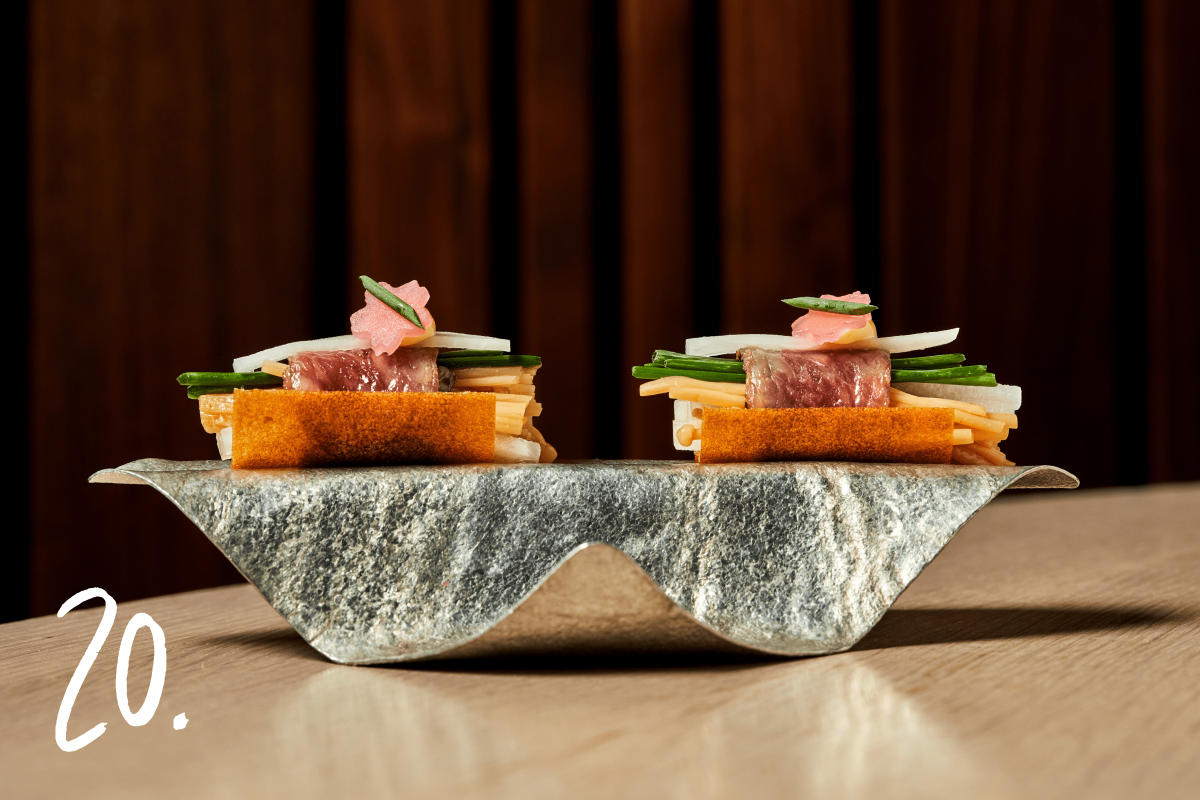
Mélisse
For diners, the transition will feel seamless: The experience remains the very definition of special-occasion dining. Bookended by one-bite sculptures served on gorgeous ceramics to start and finish, two-plus hours float by in a dance of veloutés and nages, uni and lobster, duck press theatrics and ganache tarts fashioned from Valrhona’s line of blond chocolate. Wine pairings aim to impress jaded oenophiles. The cost, beginning at $399 per person, rivals the price of our most opulent omakase counters. Records play on the topnotch stereo system. It was mostly 1970s and ’80s-era R&B during a recent dinner, and caviar just tastes better with Billy Ocean playing in the background.

Sushi I-Naba

Chi Spacca
Meat cookery remains the menu’s nucleus. Beyond massive, ever-excellent steaks, consider the slightly more manageable pork loin: It’s roasted in milk and covered, as if spring never ends, in a fine dusting of fennel pollen. Burgers (and variations on Silverton’s famous grilled cheese sandwich) are available on Mondays and Tuesdays for customers who specifically reserve at Chi Spacca’s chef’s counter. Among several options, all of them honestly first-rate and assembled with detail, start by trying the opulent take on a smashburger fashioned from dry-aged beef.

Birdie G’s

Ammatolí
A few pleasant ubiquities like arugula and beet salad crop up on the menu, but more than ever her cooking leans into tradition-minded dishes. Among exemplary hummus and lemony tabbouleh in the mezze selection, look for more intricate options like fried kibbeh stuffed with herbed spinach, and salty, edge-of-funky grilled halloumi paired with watermelon. Larger plates are excellent for groups, or for leftovers. One standout: Palestinian musakhan, roast chicken and onions piled on flatbread that’s stained nearly purple with sumac. The dish was traditionally consumed in autumn — eaten by hand, composing bites of bread, chicken and onion — with ample olive oil to taste and assess the year’s first local pressings. It’s as satisfying for dinner as it is for brunch alongside a skillet full of saucy shakshuka. I don’t know of more consummate classical Levantine cooking in Southern California.

Funke
When I see Funke standing at the kitchen pass in his signature denims, I know the varied rolled and extracted pasta forms will be presented fastidiously: ridged agnolotti with the green chard filling nearly seeping through the translucent dough; tagliatelle so light and fine its texture almost tickles; and rasccatieddi di miscchieddu, an oval rarity made by hand with semolina and fava bean flours that Funke learned while filming his show “The Shape of Pasta,” sauced in lamb ragù and scattered with rustling dried chiles. Funke, per its neighborhood and clientele, is expensive, but with his presence the cooking is so on-point. I’m forever glad that Shannon Swindle, one of L.A.’s finest pastry chefs, has become part of Funke’s inner culinary circle: Trust that whatever crostatas and pastries and ice creams feature the season’s fruits will be spectacular.

Kismet
For those of us who eat higher on the food chain, the lemony chicken phyllo “pies” dotted with pine nuts and, when it’s available, the massive sesame-crusted chicken schnitzel sandwich floating on brioche toast prove consistently comforting. To keep the inspiration flowing, Hymanson and Kramer have hosted some high-wattage guest talent, including New York-based Jamaican American chef DeVonn Francis. Watch Kismet’s Instagram account to see who’s next.

Heritage Barbecue

Here's Looking at You
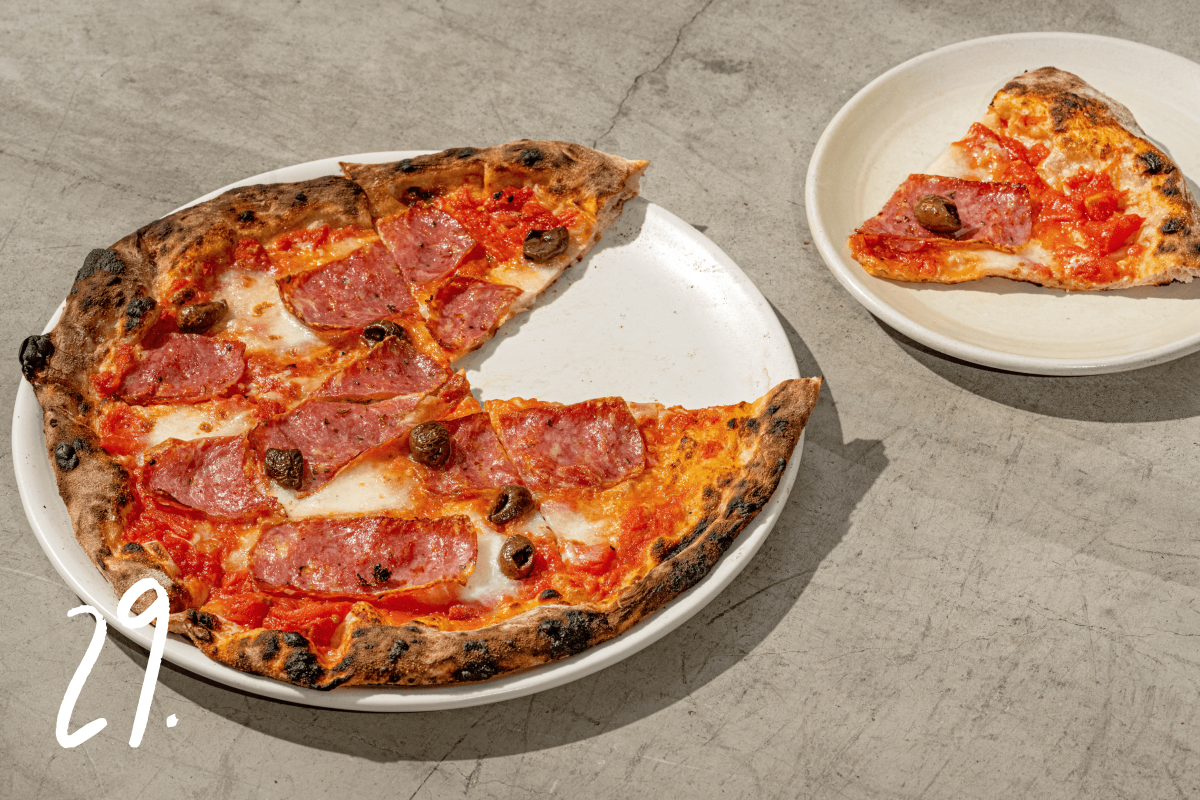
Pizzeria Bianco

Knife Pleat
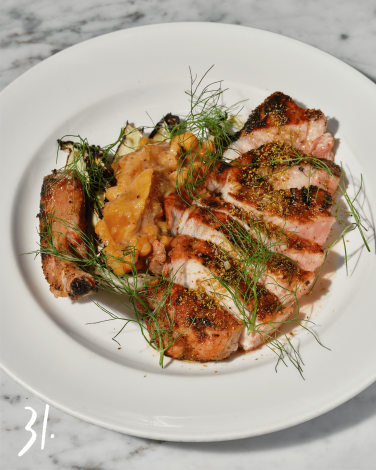
Osteria Mozza

Sushi Kisen

Baroo
They fulfilled their vow in late summer in the form of a sedate, industrial-modernist space in downtown’s Arts District. The new Baroo looks and feels nothing like its predecessor. Mostly that’s a gain: Park runs an engaged, genial team as general manager, and Uh’s calm demeanor and ever-straight back can be viewed through the large kitchen window. The opening menu is $110 for seven courses. To balk at a tasting-menu format is to miss out on sweet, delicate skate fried in seaweed batter and cradled in leafy greens, and slices of charred pork-collar meat fanned over a sauce that riffs on kimchi jjigae … and other dishes, honed but still flaunting a hint of wildness, that trumpet the return of an exceptional culinary mind.

Alta Adams
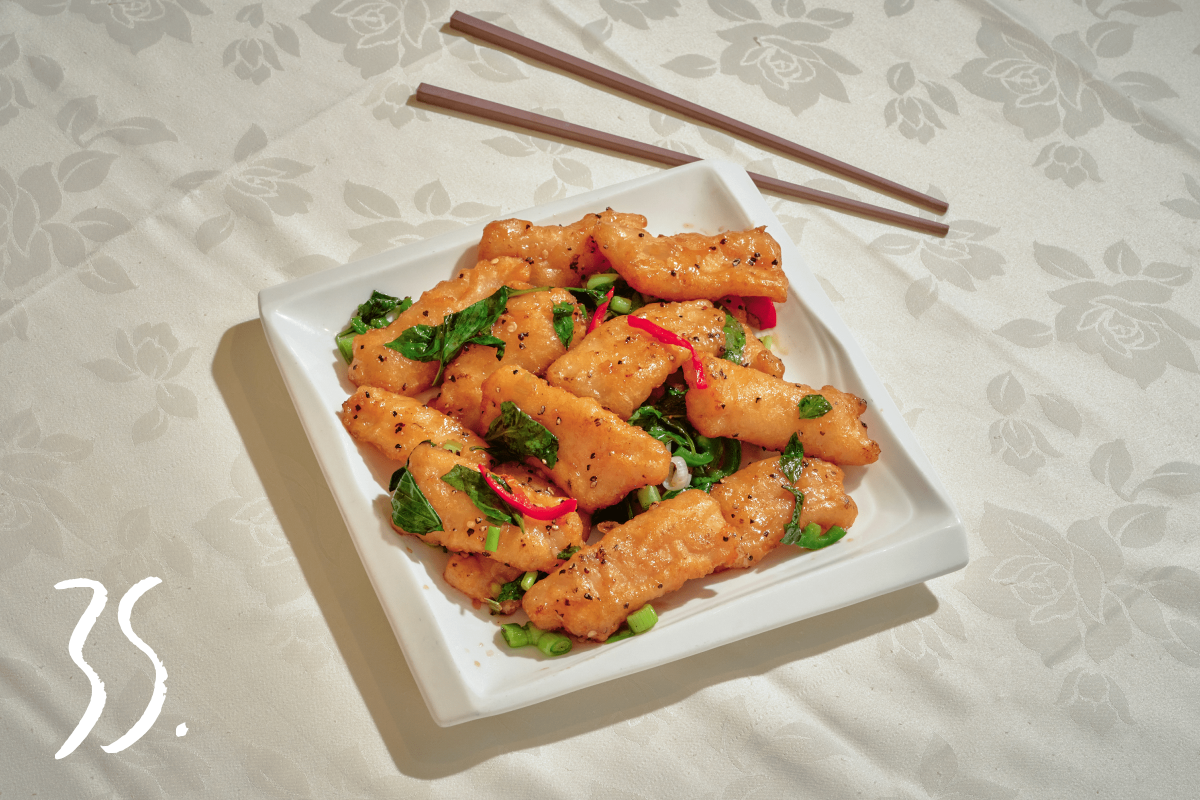
Henry's Cuisine

Damian
It’s important to mention Damian’s adjacent taqueria, Ditroit, hidden around back with an entrance down an alley, and the primacy of its extra-long fish flauta with a mulchy, piquant filling that evokes Baja’s smoked marlin tacos.
Read the full review of Damian.

Kuya Lord
Read the full review of Kuya Lord.
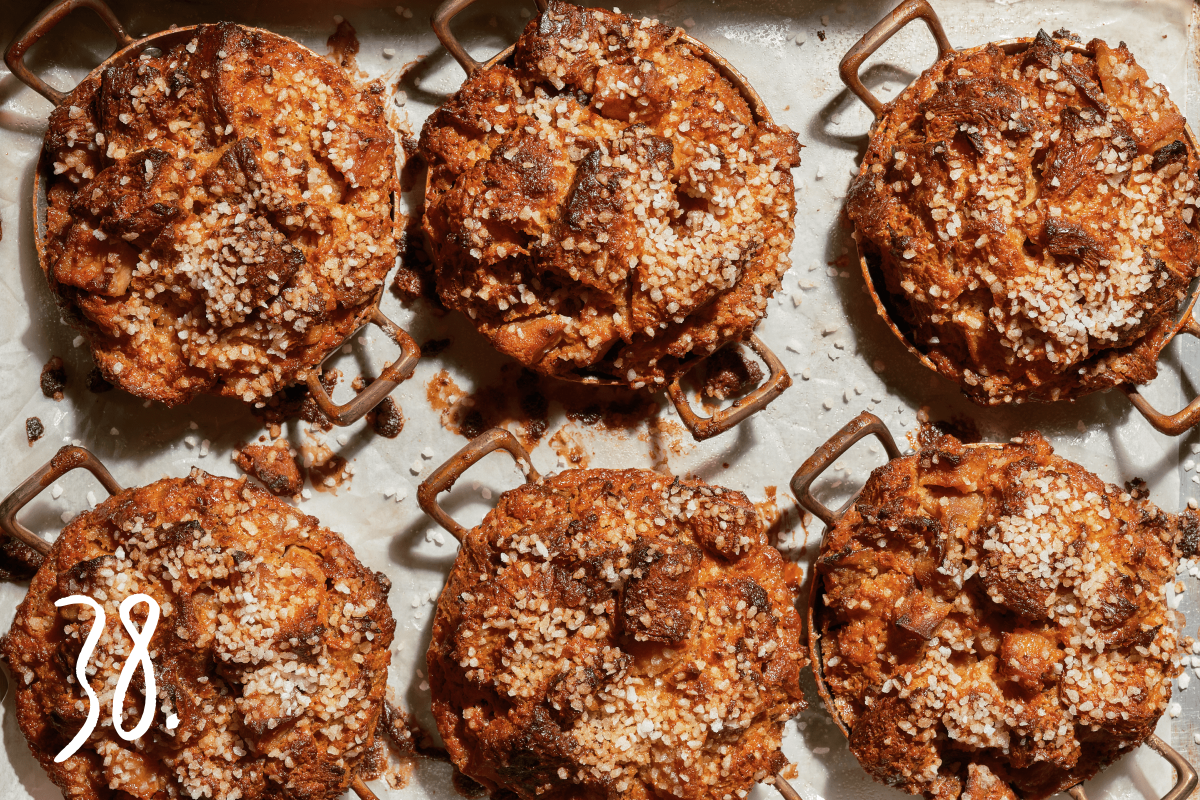
Bicyclette

Yang’s Kitchen
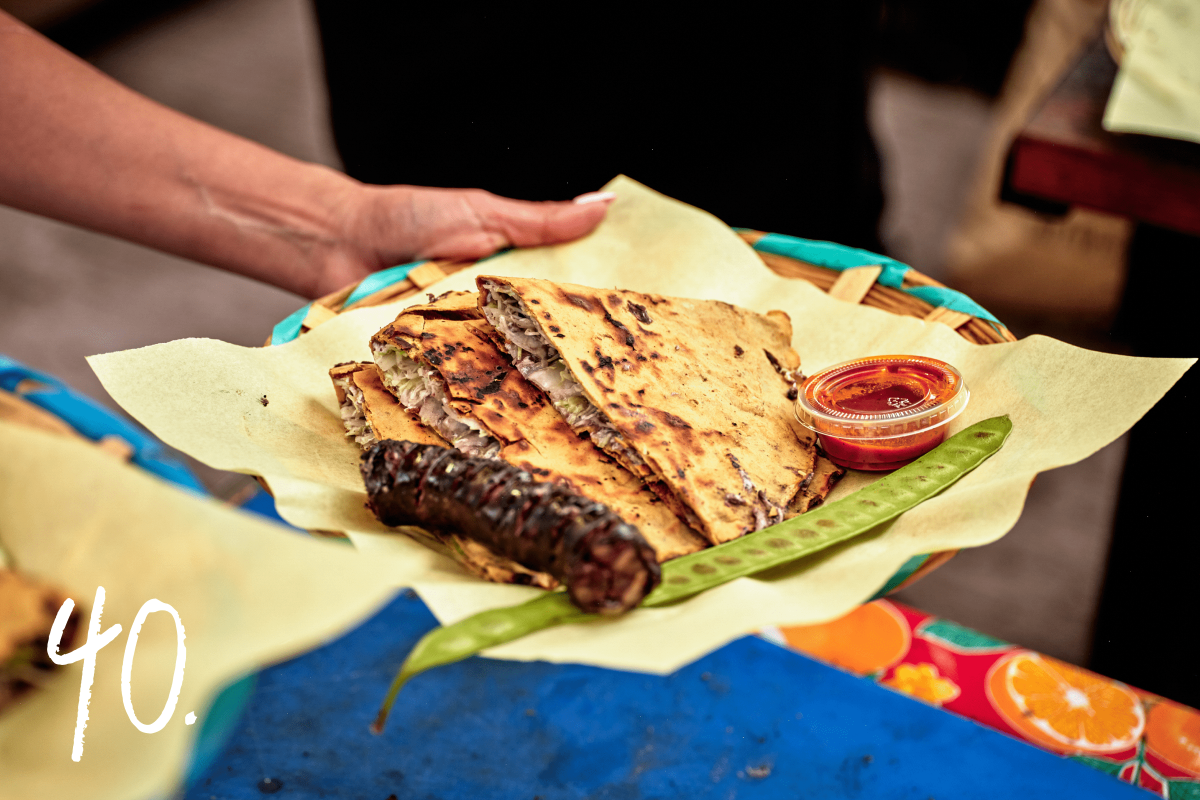
Poncho’s Tlayudas
Read the full review of Poncho’s Tlayudas.
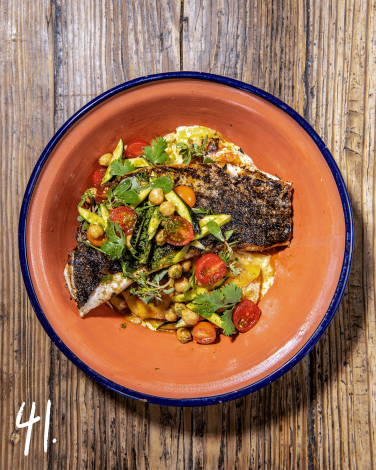
A.O.C.
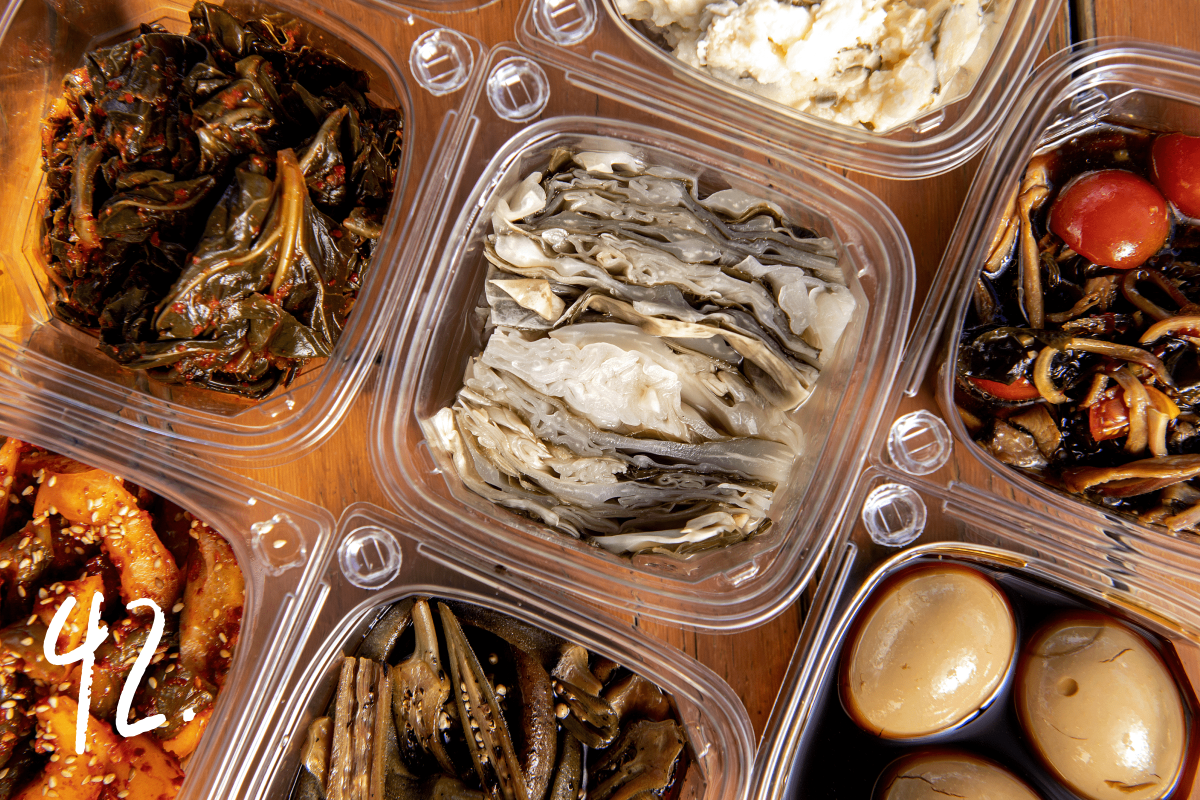
Perilla L.A.
Locating Perilla can feel like a treasure hunt on the first visit: Follow GPS to the Victor Heights address at the edge of Echo Park and look for the peachy-orange buildings. Turn the corner at Heavy Water Coffee and follow the row of tables shaded with umbrellas to Perilla’s tiny gabled home in a converted garage.
Read the full review of Perilla L.A.
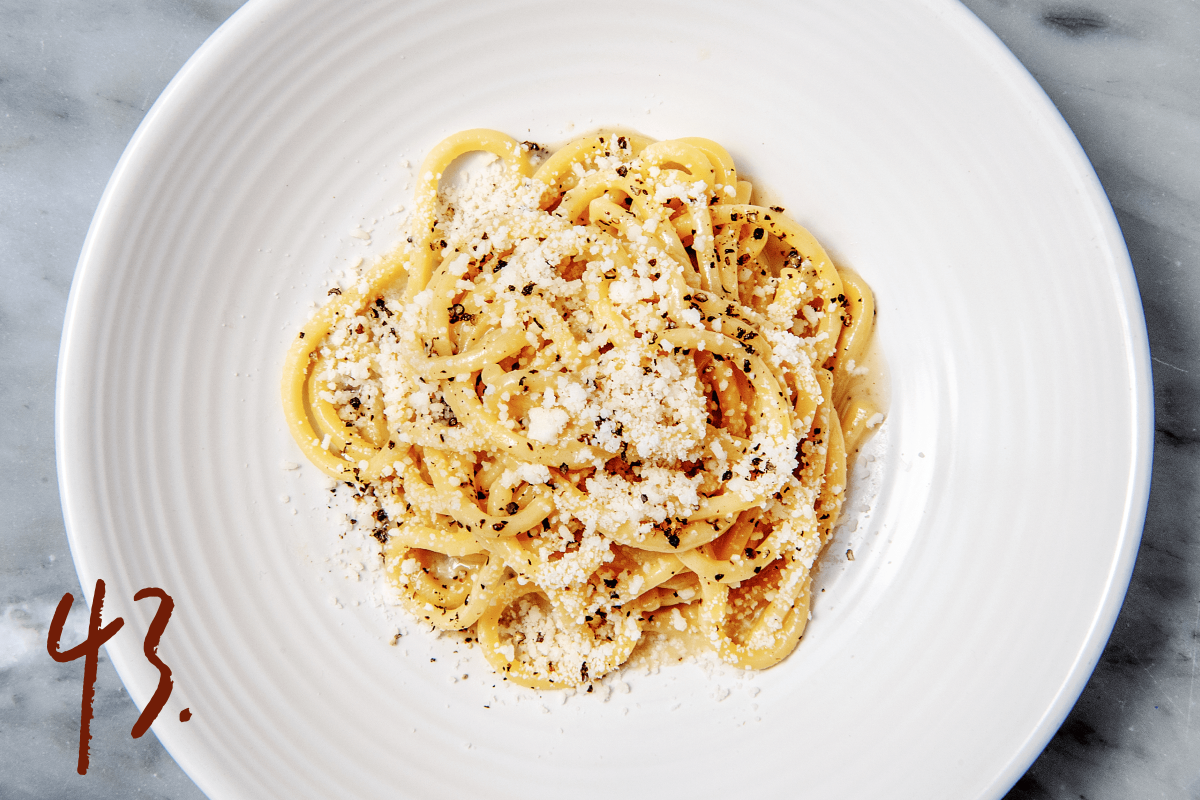
Felix

Pine & Crane
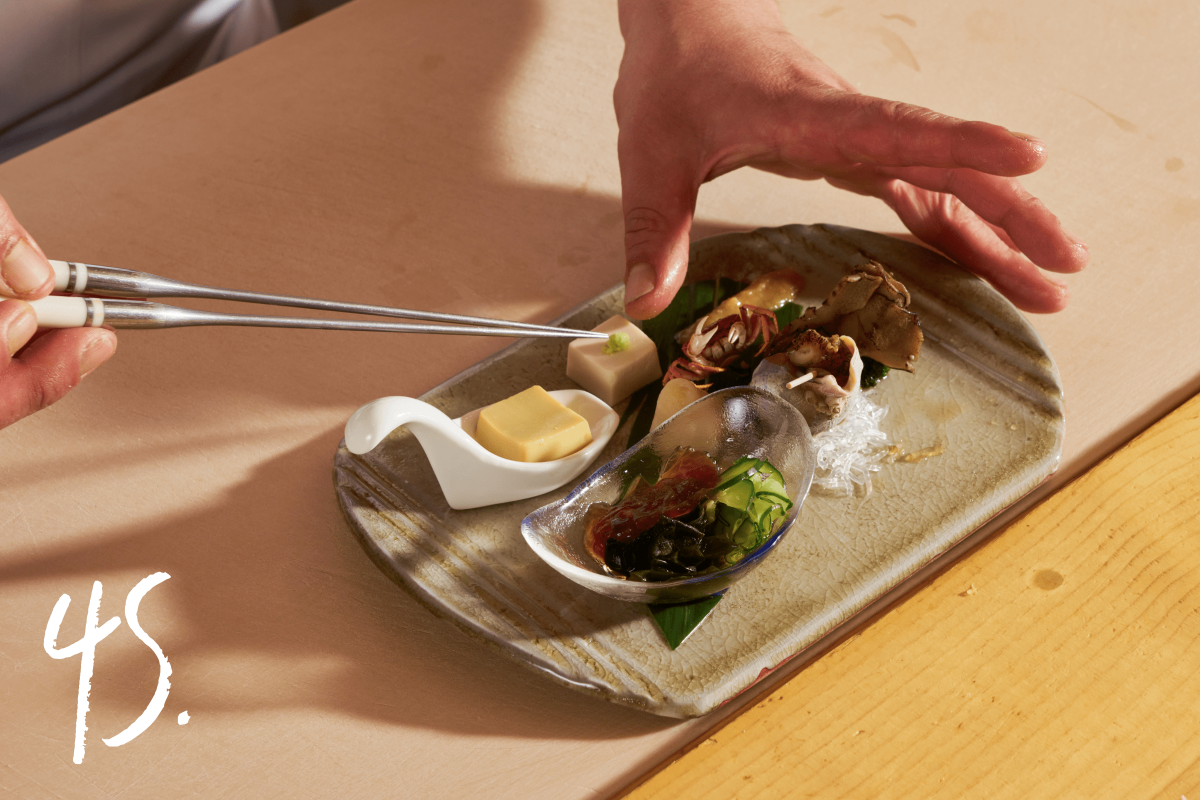
Shin Sushi
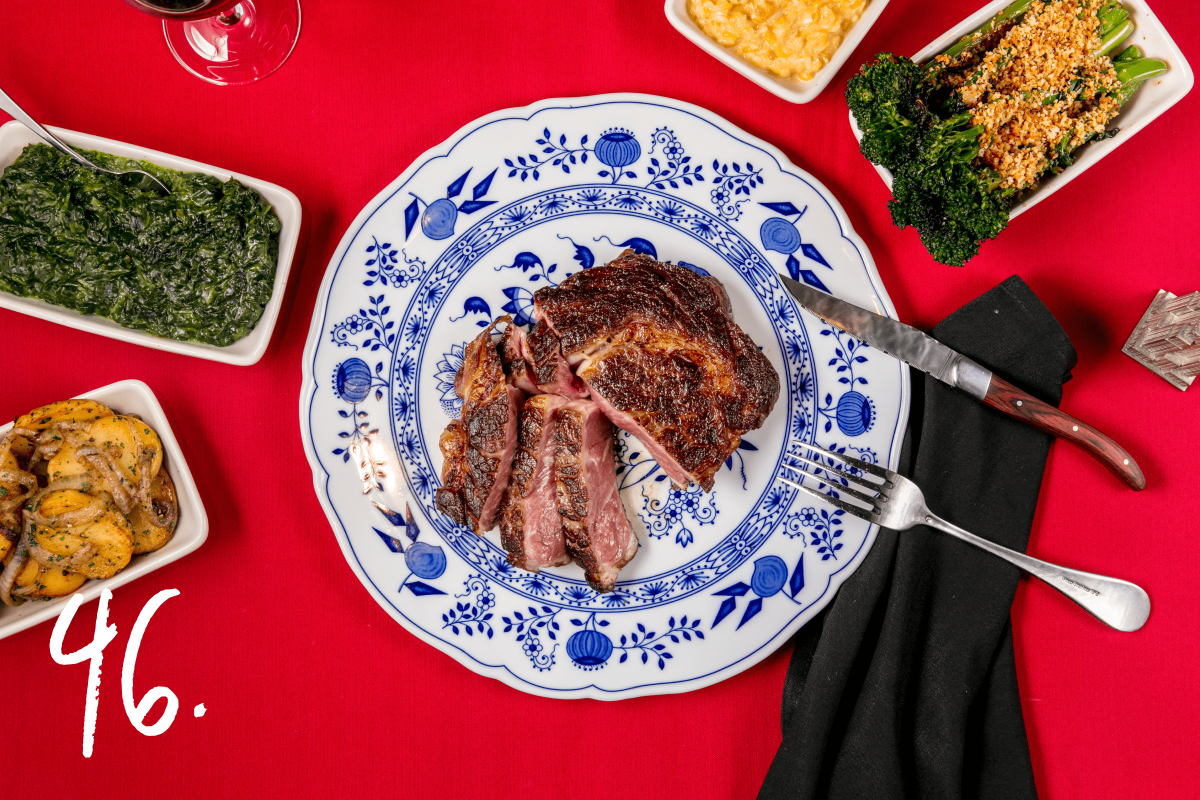
Dear John's

Cassia
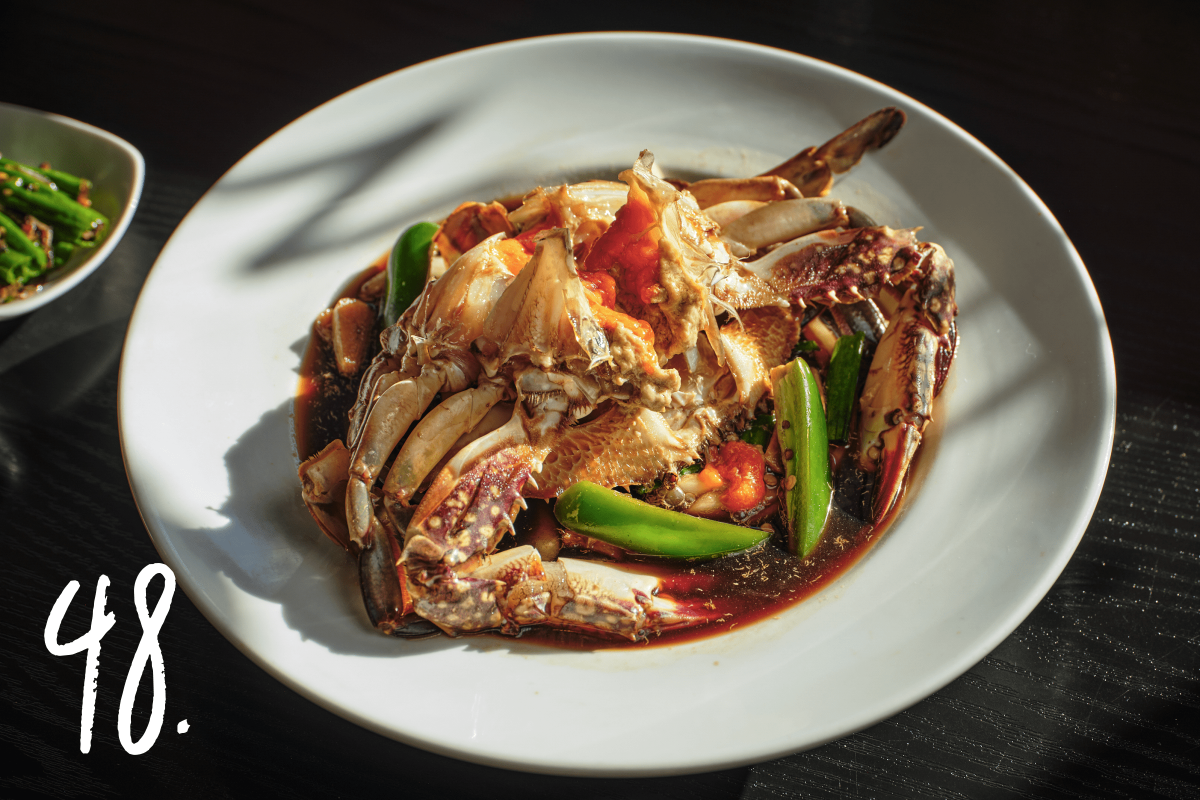
Soban

Bhookhe
A nearly 80-item menu also veers through chaat and puri variations, and curries that include a smattering of North Indian vegetarian classics like palak paneer. But I’m here to zero in on Rajasthani paragons. Beyond the thali, look for mirchi vada, green chile fritters filled with spiced potatoes and fried golden in chickpea batter, and a curry that centers around makhana, dried lotus seeds that are also known as fox nut. They bathe in a silky pool of milk and cream; fish out the cashews at the bottom of the pan for a study in crunch alongside the makhana, and save the gravy for dunking crusty bati.
Read the full review of Bhookhe.
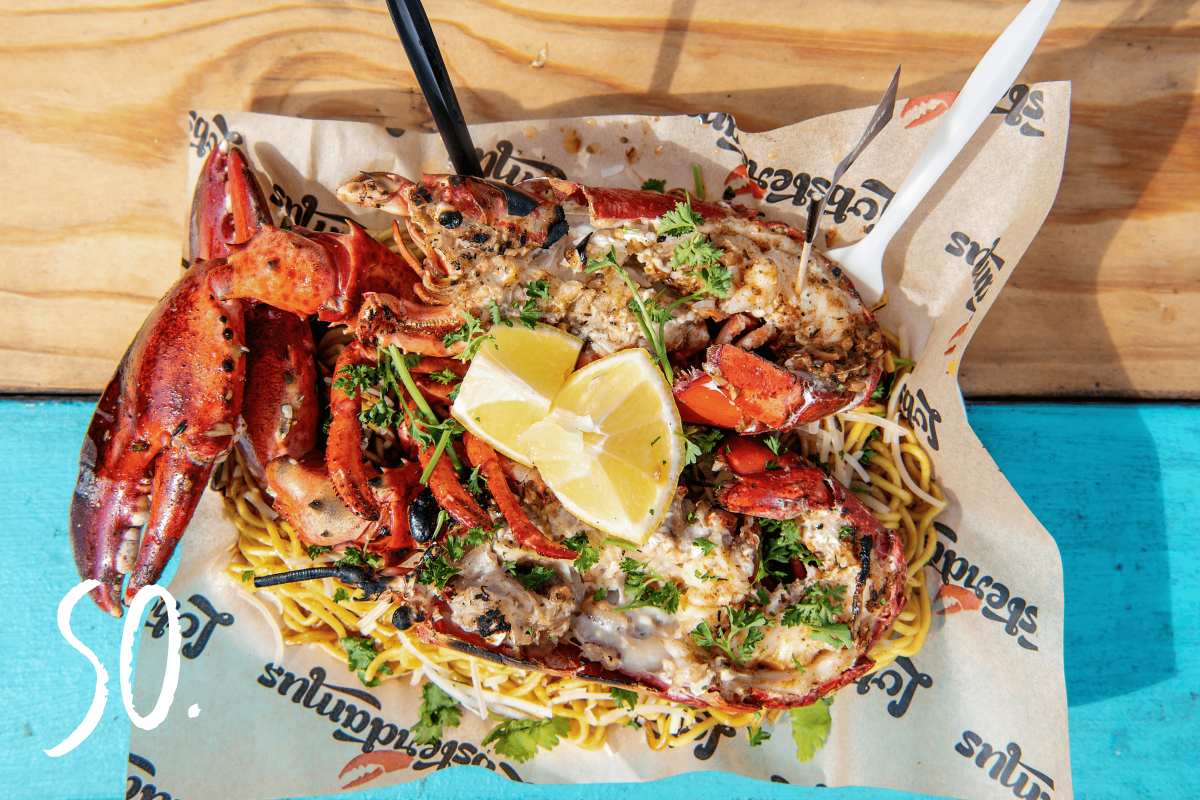
Smorgasburg L.A.
The pleasure of attending Smorgasburg in its eighth year is revisiting vendors that have gained citywide followings, while also scouting out newcomers. A recent Sunday tour included a breakfast burrito from Jonathan Perez’s Macheen, lamb barbacoa flautas from Steven Orozco Torres’ Los Dorados, and a green chorizo torta from Evil Cooks. For dessert? Velvety scoops of sour cherry and orange blossom-pistachio ice creams from Kinrose Creamery, which landed official vendor status in September.

n/soto
Read the full review of n/soto.

Bestia
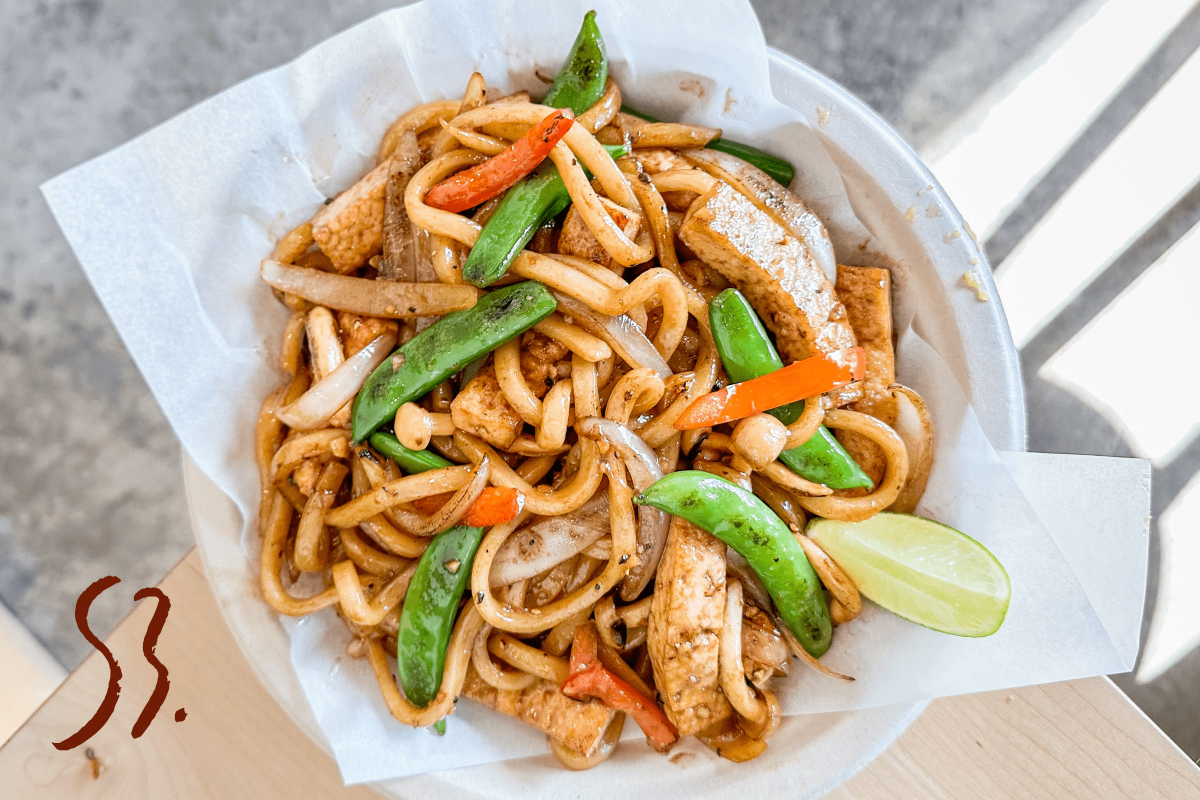
Needle

Villa's Tacos
Read the full review of Villa’s Tacos.

Dunsmoor
Dunsmoor calls on his family roots in Georgia and Colorado to inform his cooking. Before moving to Los Angeles, he worked at Hugh Acheson’s nationally acclaimed Southern lodestar Five & Ten in Athens, Ga., during the same era I was reviewing restaurants in Atlanta. Much of his place here feels familiar in my bones: the shades of scruffy wood, faded brick and caramel lighting in the Glassell Park dining room (a location that sparked gentrification dissent when it opened 16 months ago); the influences of Indigenous and Black cooks that survive the centuries, modernized as trout over soothing grits with ham vinaigrette, succotash salad beaming lemon and soft herbs, and a soul-satisfying Low Country-style boil of sausage, shrimp, corn and potatoes. His stew of chicken and slippery dumplings reminds me of my grandmother’s. Erika Chan, whose desserts I’ve previously admired at Kato and Rustic Canyon, is a fantastic new addition to the team. She reimagines a fig preserve Bundt cake beloved in North Carolina’s Outer Banks into a crunchy, crumbly, fruit-forward sort of Eton mess that closes the miles between the American South and the Pacific coast.

All Day Baby

Found Oyster
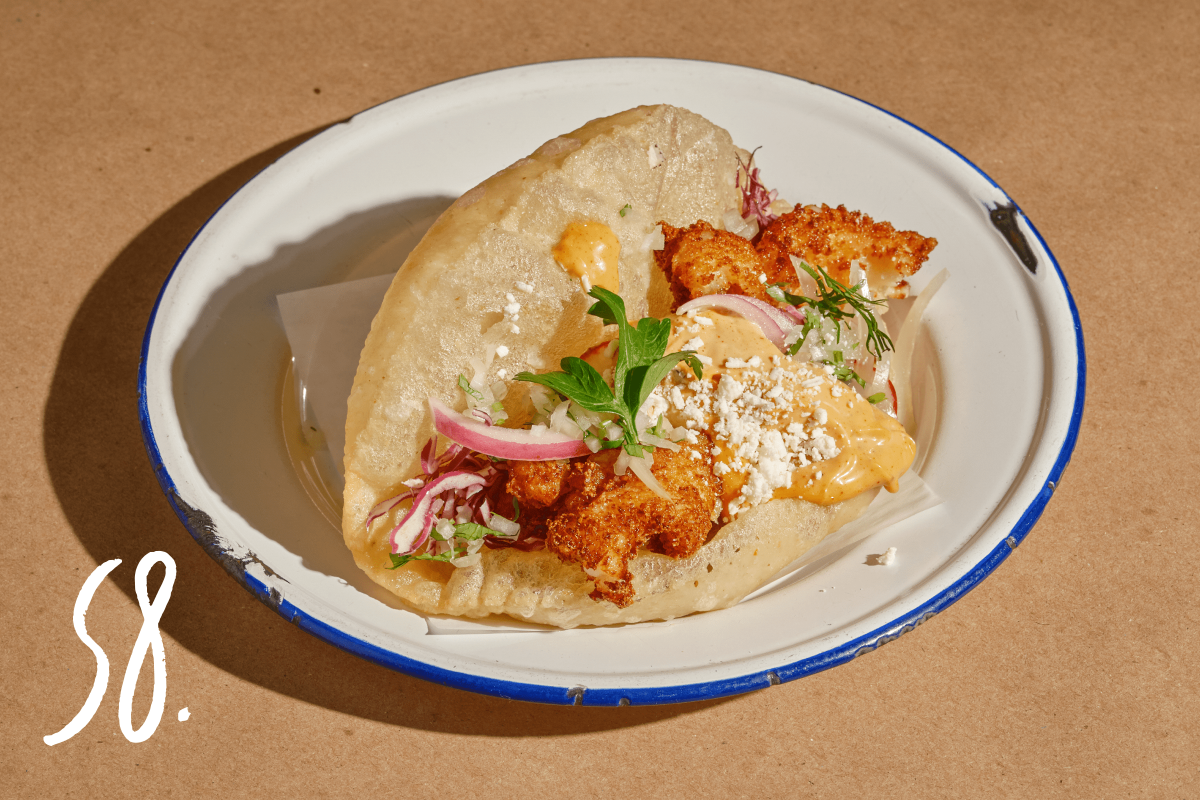
Bar Amá

Lasita

Pizzeria Sei
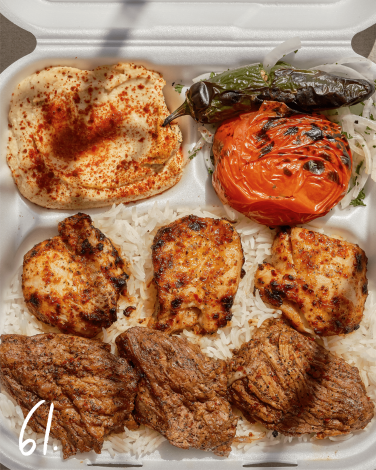
Mini Kabob

Mariscos Jalisco
Ortega operates three additional outposts, including a counter restaurant in Pomona, with the same menu, and a lonchera on the Westside. If none of them quite reaches the pinnacles of the Boyle Heights truck, it still might be the most amazing seafood taco you’ve ever had, and a fast-track entry into the city’s culinary culture.

Majordomo

Barsha

Sincerely Syria
Read the full review of Sincerely Syria.

Dulan’s Soul Food Kitchen
Bonus: Family member Greg Dulan, who is close to reopening Dulan’s on Crenshaw, and Kim Prince, whose Hotville Chicken heartbreakingly closed late last year, teamed up for a food truck they call Dulanville, serving Nashville-style hot chicken in tacos and red beans and rice loaded with sausage. Follow along on Instagram to see where they’ll pop up next.

Crudo e Nudo

Bar Chelou
Read the full review of Bar Chelou.
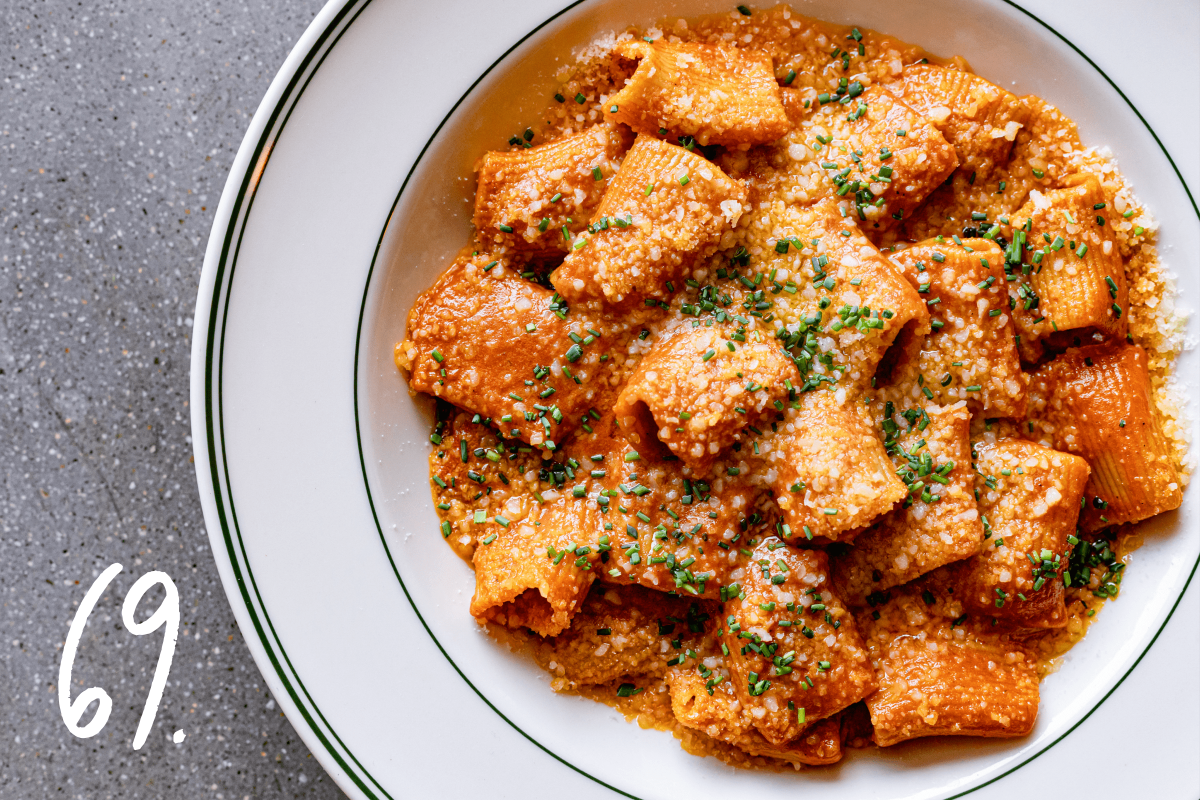
Pijja Palace
Read the full review of Pijja Palace.
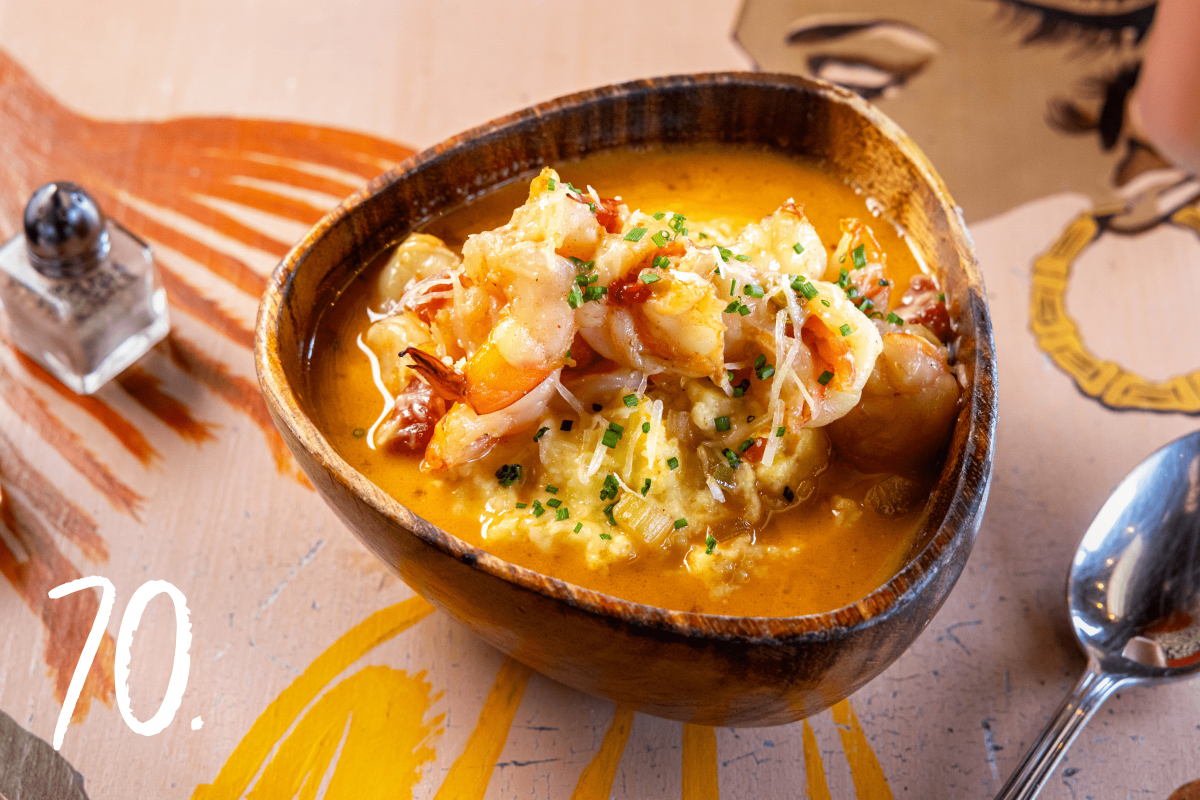
My 2 Cents
If you haven’t yet seen Reynolds’ globe-traveling show “Searching for Soul Food,” released on Hulu in June, make it your next binge watch.

La Diosa de los Moles
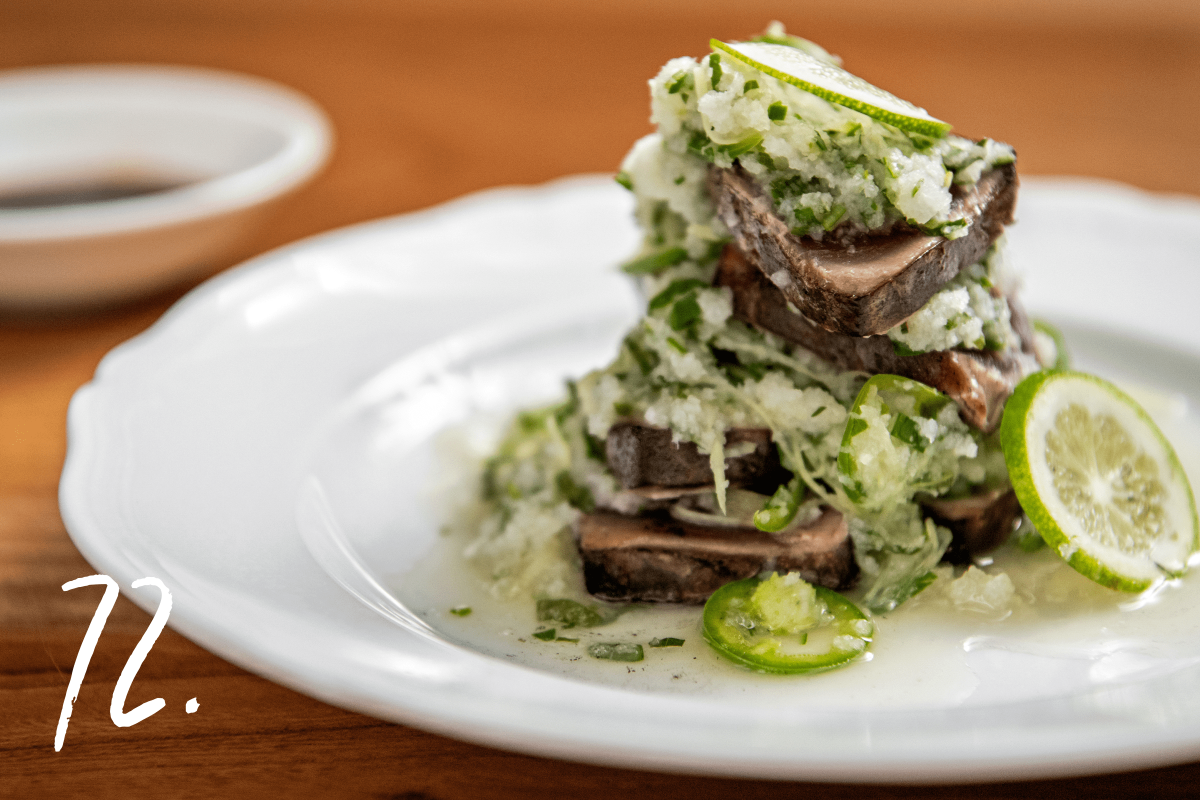
Yess Restaurant
The restaurant opened with an a la carte menu, during which time I reviewed it, and then switched to a semi-fixed dinner menu of set starters with entree choices and optional add-ons. The old format, which can still be experienced during weekend brunch, best accentuated the kitchen’s strengths. I should probably mention it has become something of a pastime to comment on the white uniforms worn by the crazy-earnest staff; they look like something out of a spa, or costumes in a restaurant-themed Wes Anderson movie, or a scene from “The Menu.” All said, this gifted team, in its otherworldly setting, has an ascendent place in L.A.’s dining landscape.
Read the full review of Yess.

Holy Basil

Nok's Kitchen

Courage Bagels
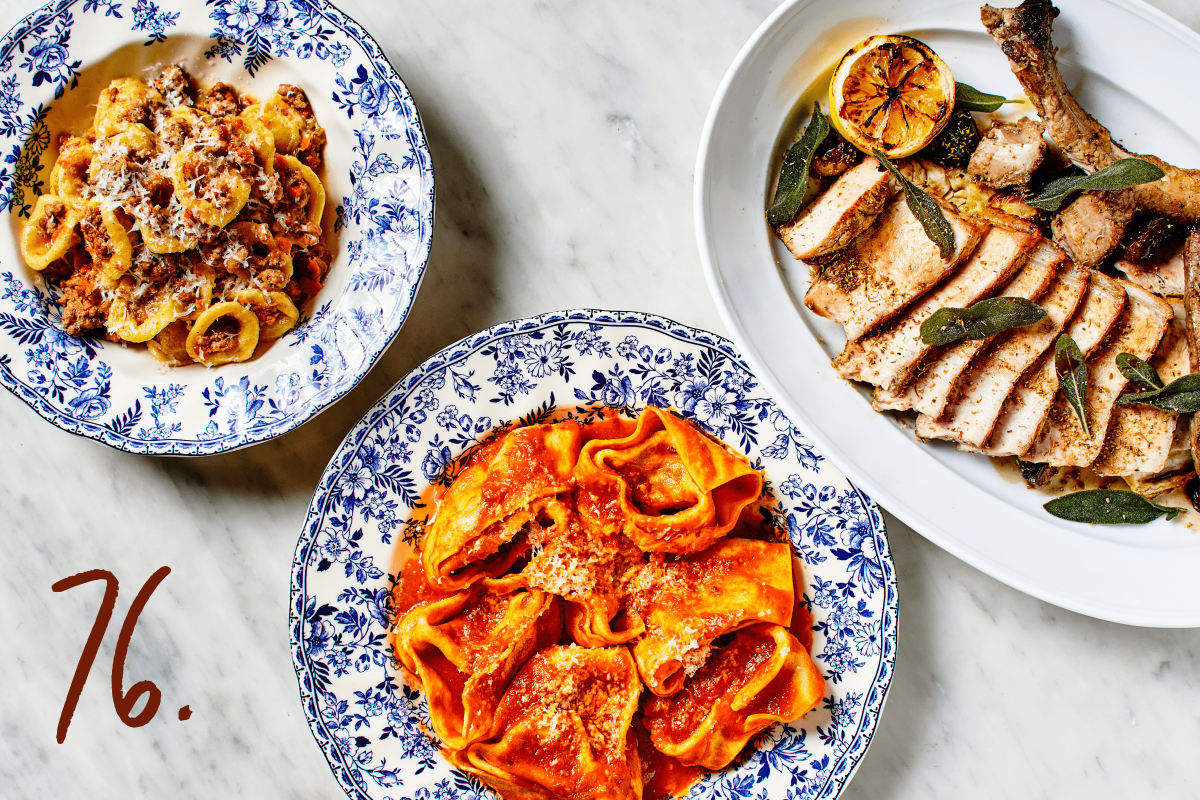
Rossoblu
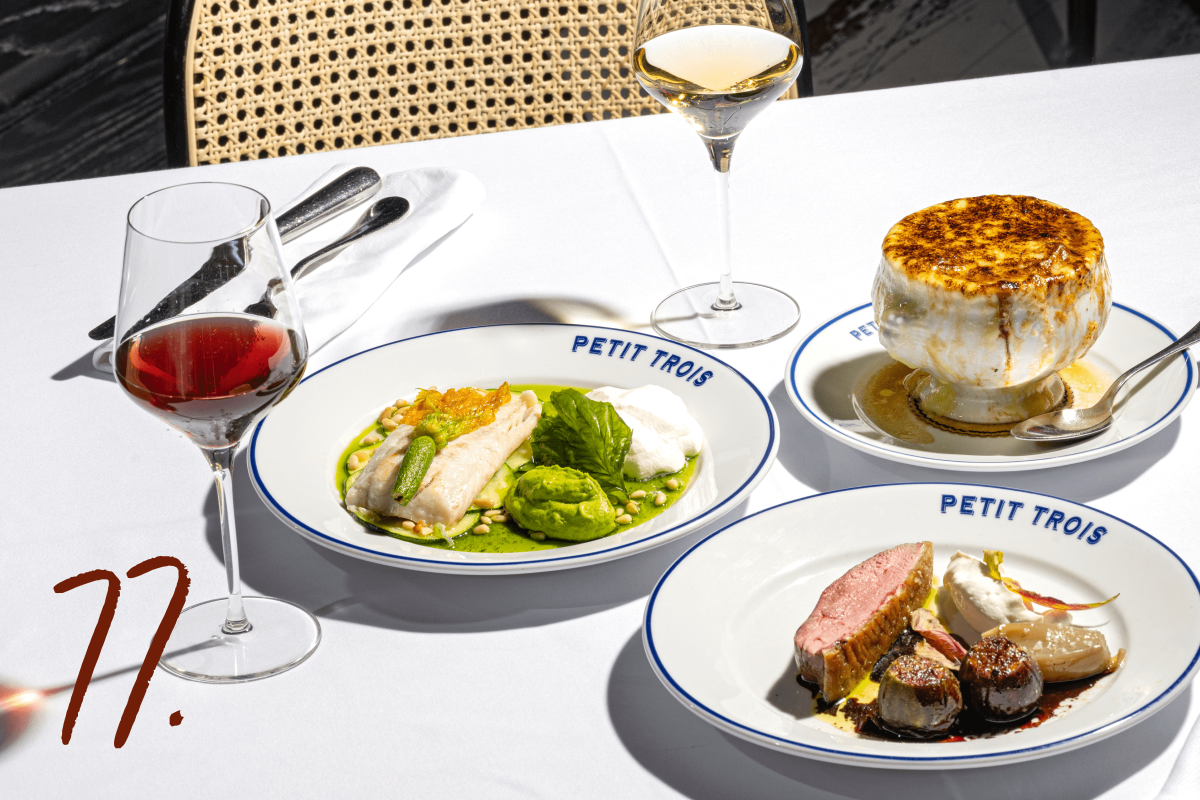
Petit Trois
These days a roomy patio stretches outside the original location, and the Sherman Oaks branch, which hews more brasserie than bistro, is 5 years old. The menu has ballooned to include pleasers like broccoli soup and pork chops with tomato cream sauce over rice pilaf. Lilting specials like branzino sauteed in curry butter come and go. But on cool, rainy Los Angeles nights you might find me back at the bar’s counter, missing departed friends who loved it here and polishing off an omelet with a glass of Saumur Blanc that tastes exactly right with eggs.

Sun Ha Jang

Post & Beam
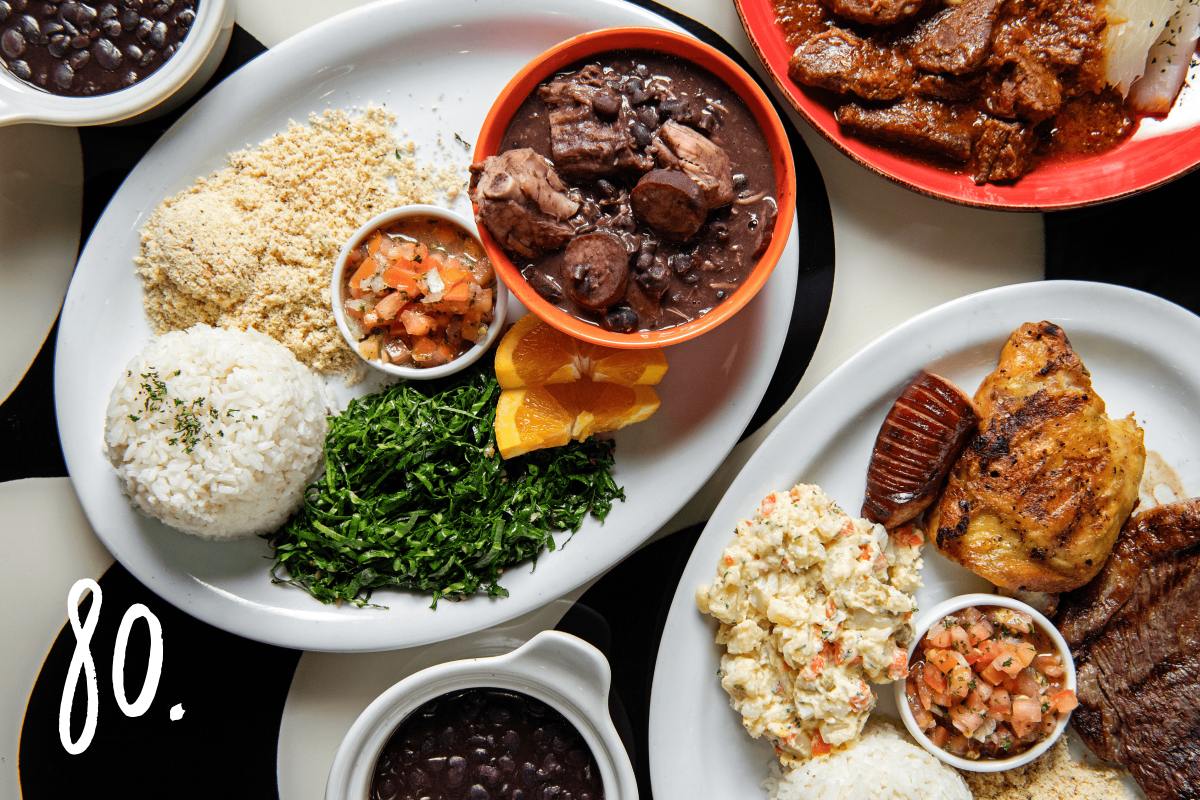
Panelas Brazilian Cuisine
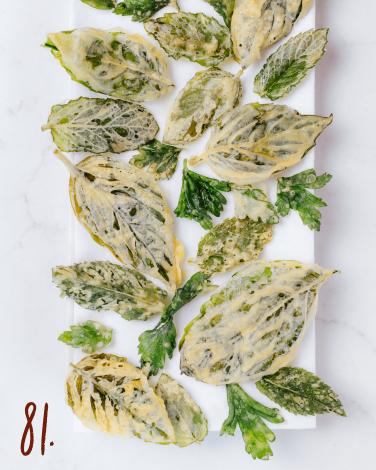
Camphor
Cocktails match the food in sophistication and complexity. Owner Cyrus Batchan spearheaded the restaurant’s collection of chartreuse — the increasingly rare (and pricey) spirit, whose recipes purportedly total more than 100 ingredients, made by Carthusian monks since the 17th century. I was amazed by the green chartreuse I tried. Its flavor had no one landing point: It rocketed from anise to summery herbs, from sweet to bitter, and back again.
Read the full review of Camphor.
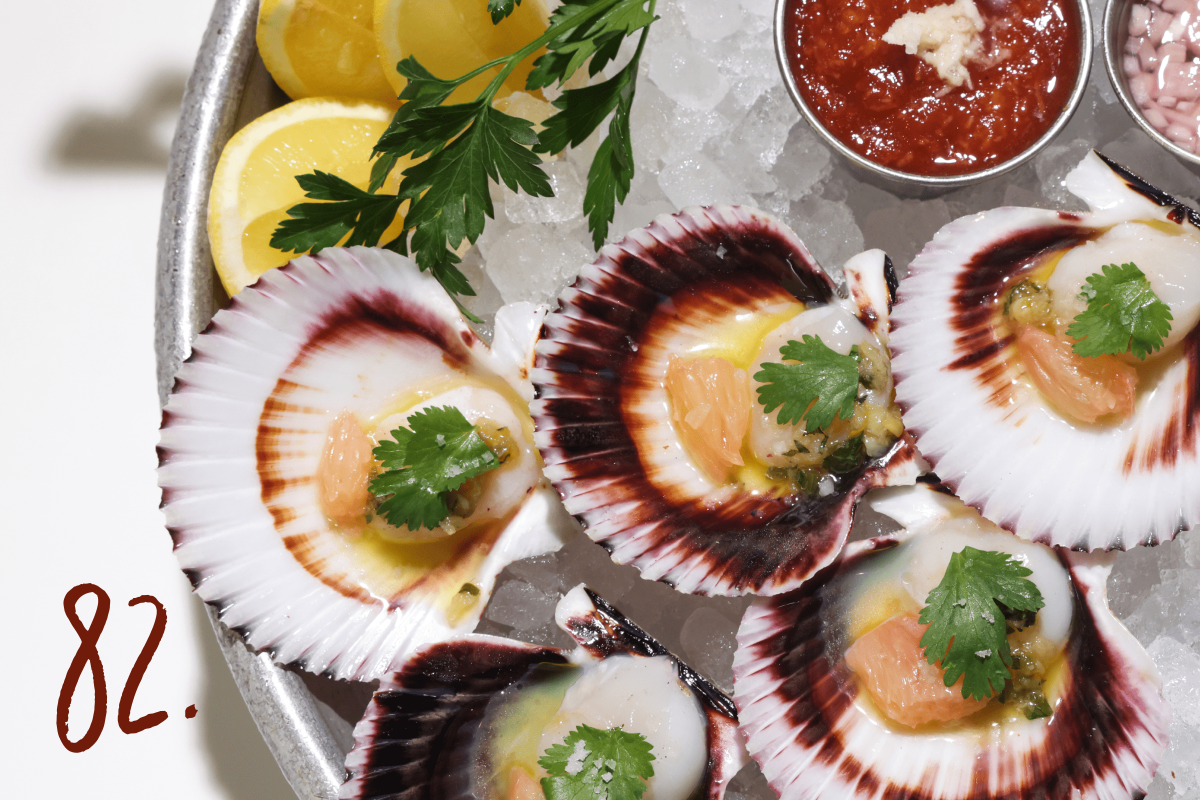
Fishing With Dynamite

Lalibela

Luv2eat Thai Bistro

Tacos La Carreta

Eat Joy Food
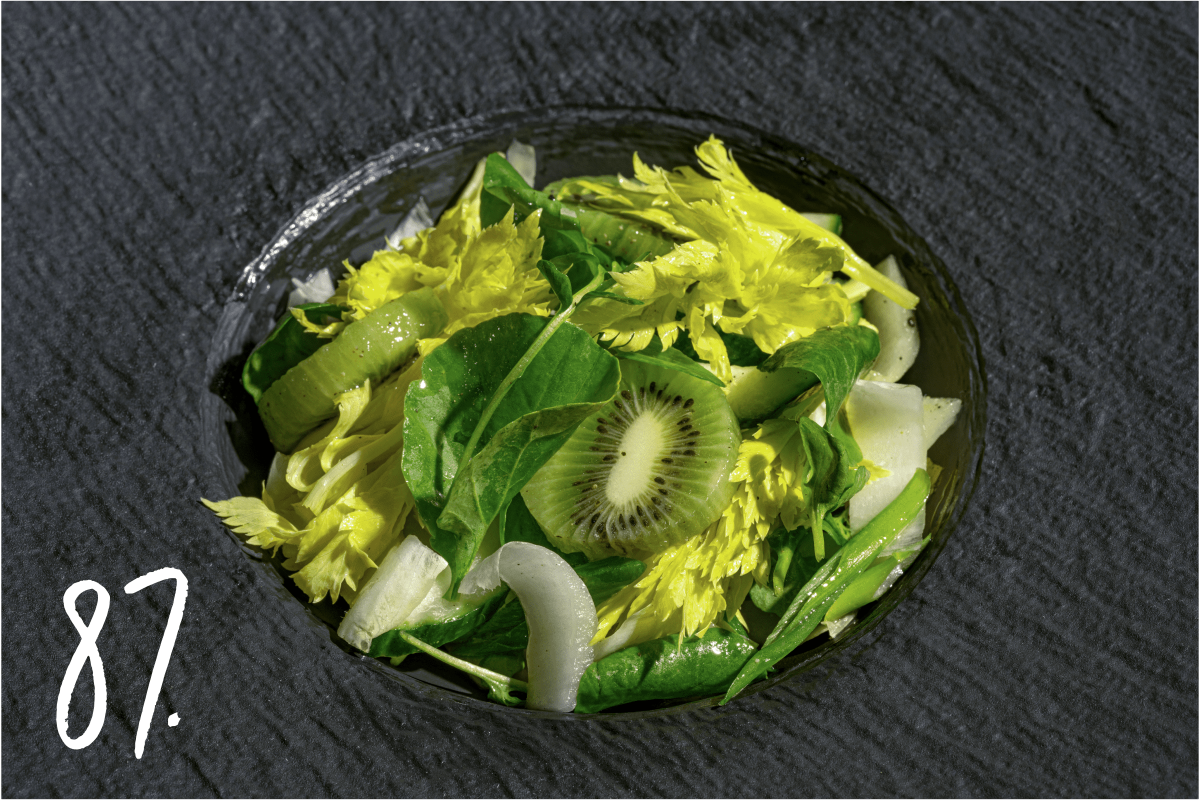
Crossroads Kitchen

Luyixian
Read the full review of Luyixian.

Two Hommés

Sichuan Impression

Al Baraka Restaurant

Sabores Oaxaqueños
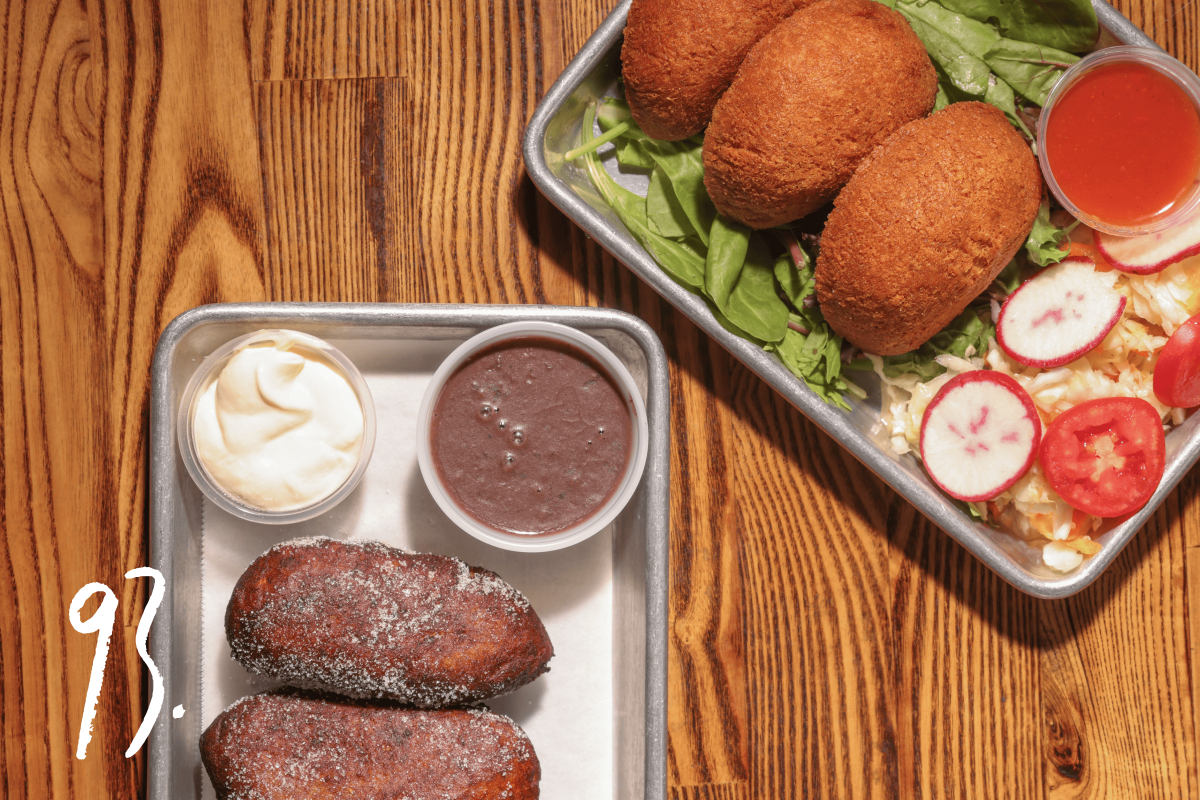
La Pupusa Urban Eatery
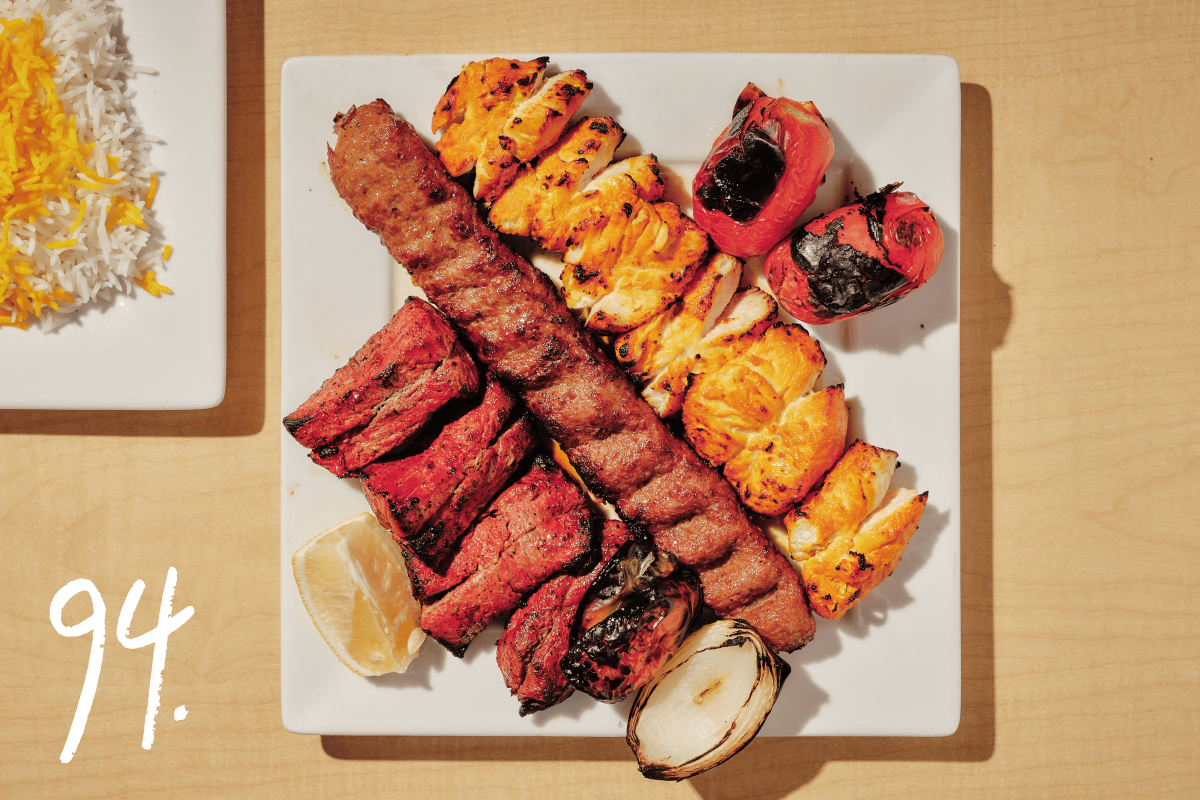
Taste of Tehran
Among the neighborhood’s many kebab houses, each presenting near-identical menus, I favor tiny Taste of Tehran. Chef and owner Saghar Fanisalek’s mix of dishes — marinated meats singed over flames and served with snow banks of rice, yogurt and eggplant dips as tart as they are rich — emerge from her small kitchen cooked with uncommon finesse. An ideal amount of grated onion sharpens the beef koobideh, which is expertly shaped in undulating patterns on the skewer; the chicken kebab has deeply absorbed its lemony marinade. Among the short list of stews that alternates through the week, the standout is Fanisalek’s silky fesenjoon, compellingly tense in its contrasts of pomegranate molasses and walnuts.

Ngu Binh
Also on my short list: Ngu Binh, with locations in Westminster and Fountain Valley, where Mai Tran and her family present dishes from Thua Thien Hue, a province in central Vietnam famous for its royal cuisine. Bún bò Hue dac biet (spicy noodle soup crowded with several cuts of pork and beef), bánh bèo (slippery rice cakes textured with minced shrimp and crunchy pork skin) and bánh ít kep bánh ram (two-tiered dumplings of glutinous rice dough filled with shrimp and pork and then set on discs of lacy fried dough) are key immersions into Tran’s regional specialties. The menus are the same at both restaurants, though the Fountain Valley space is roomier and prettier.
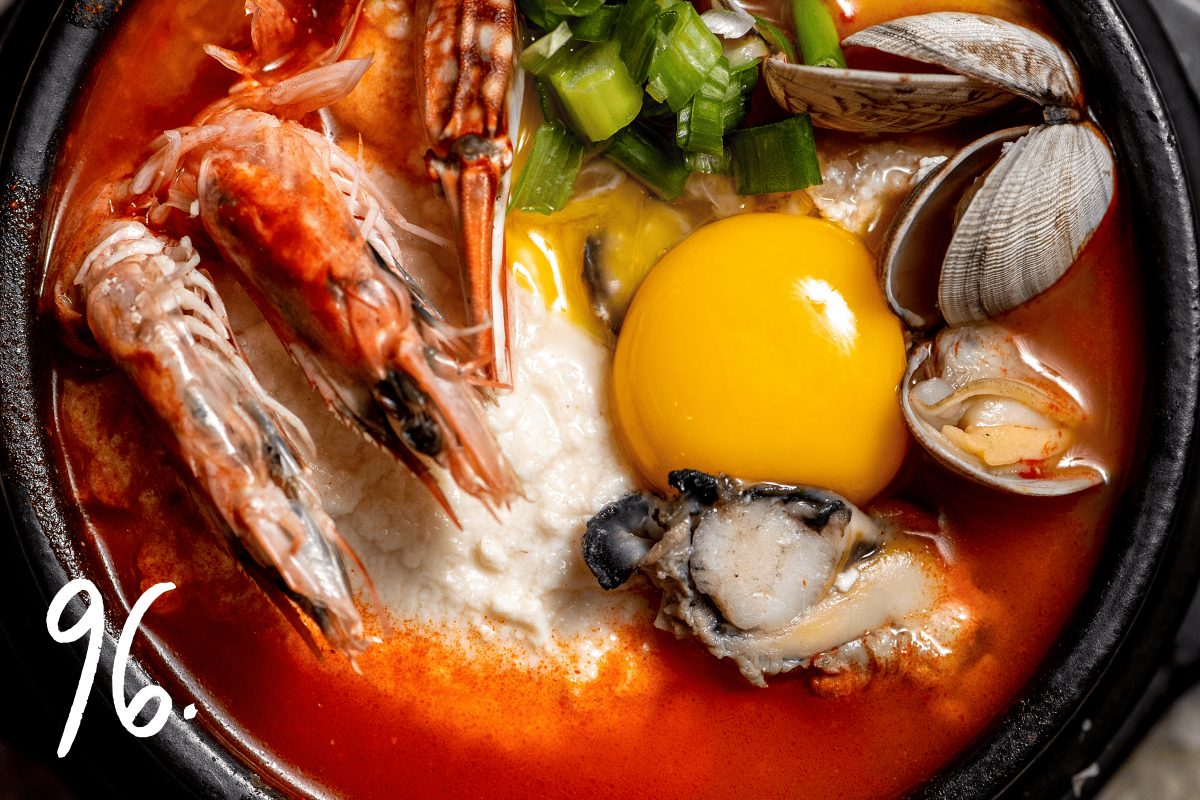
Surawon Tofu House

Jiang Nan Spring

Tokyo Fried Chicken
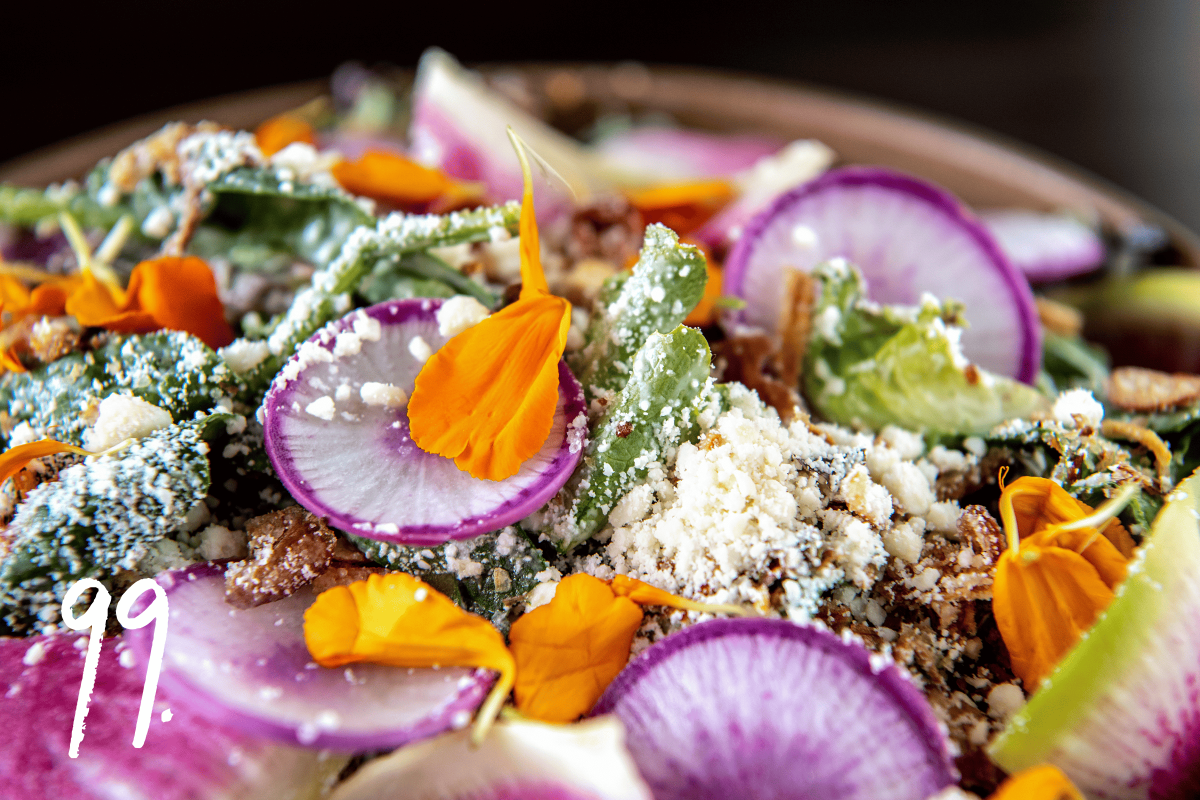
Selva
Read the full review of Selva.

Saltie Girl
Read the full review of Saltie Girl.

Poltergeist
This year’s pick honors the value of eccentricity, and of finding the right space to take risks even in uncertain, unsettling times. Diego Argoti is chef-in-residence at video game arcade Button Mash in Echo Park. He calls the project Poltergeist, and his style of cooking sings in harmony with the bleeping commotion. He creates worlds on plates we only half-recognize, which challenge our cognition and emotions. For instance, he drops L.A.’s all-but-official salad into new terrain, pushing the Caesar’s garlic-anchovy-mustard troika to its flavor threshold, and then blends lemongrass, lime leaves and capers into the dressing. Croutons have been reimagined as sheets of fried rice paper, sprinkled with powdered parsley and blue fenugreek and stacked around the salad’s bowl. It just works. Same with post-structuralist dishes like broccoli beef ravioli channeling Chinese American flavors and Penang lamb neck that also nods to shawarma. Other creations feel decidedly like works in progress. Still, customers keep the dining room full. When a mind like Argoti’s is breaking through to something fresh, we come to bear witness and see what’s next.
Read the full review of Poltergeist.
Eat your way across L.A.
Get our weekly Tasting Notes newsletter for reviews, news and more.
You may occasionally receive promotional content from the Los Angeles Times.
